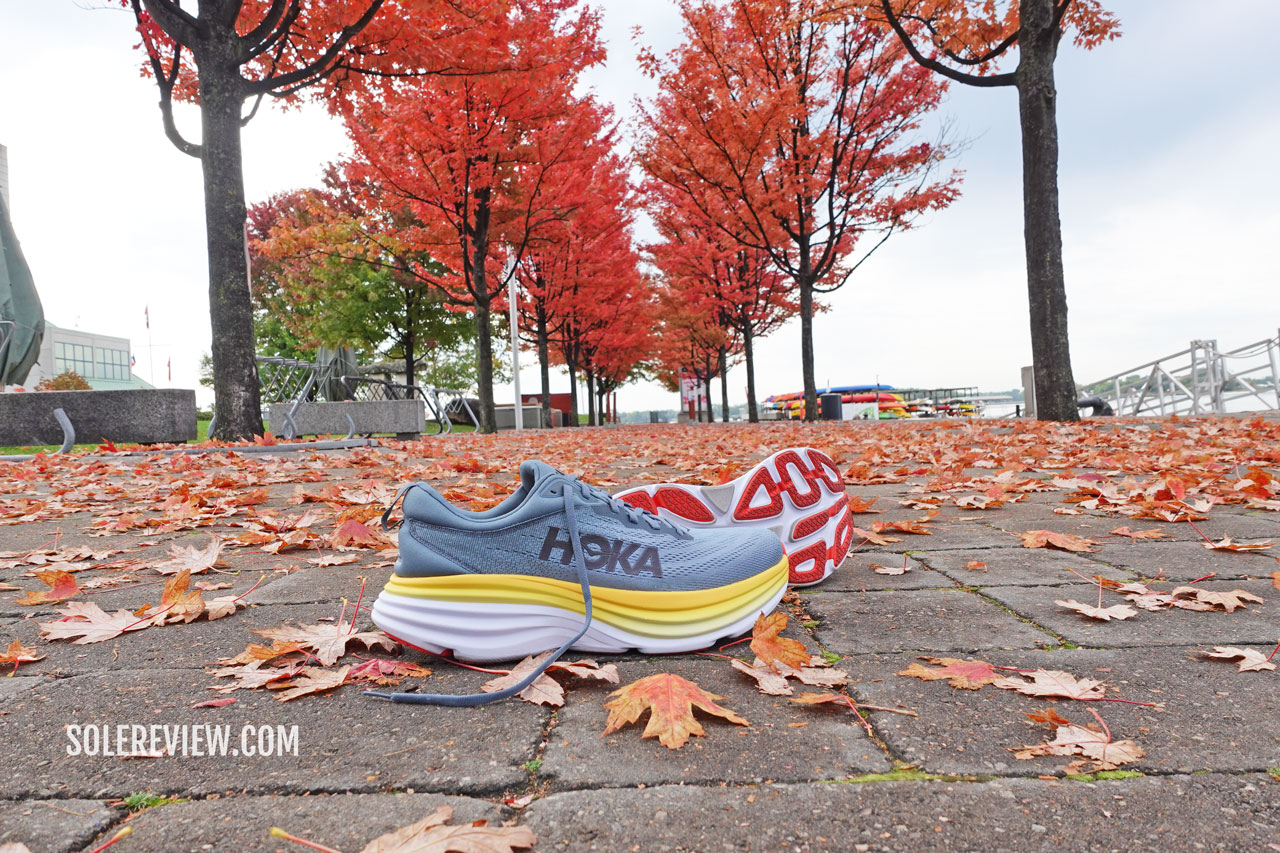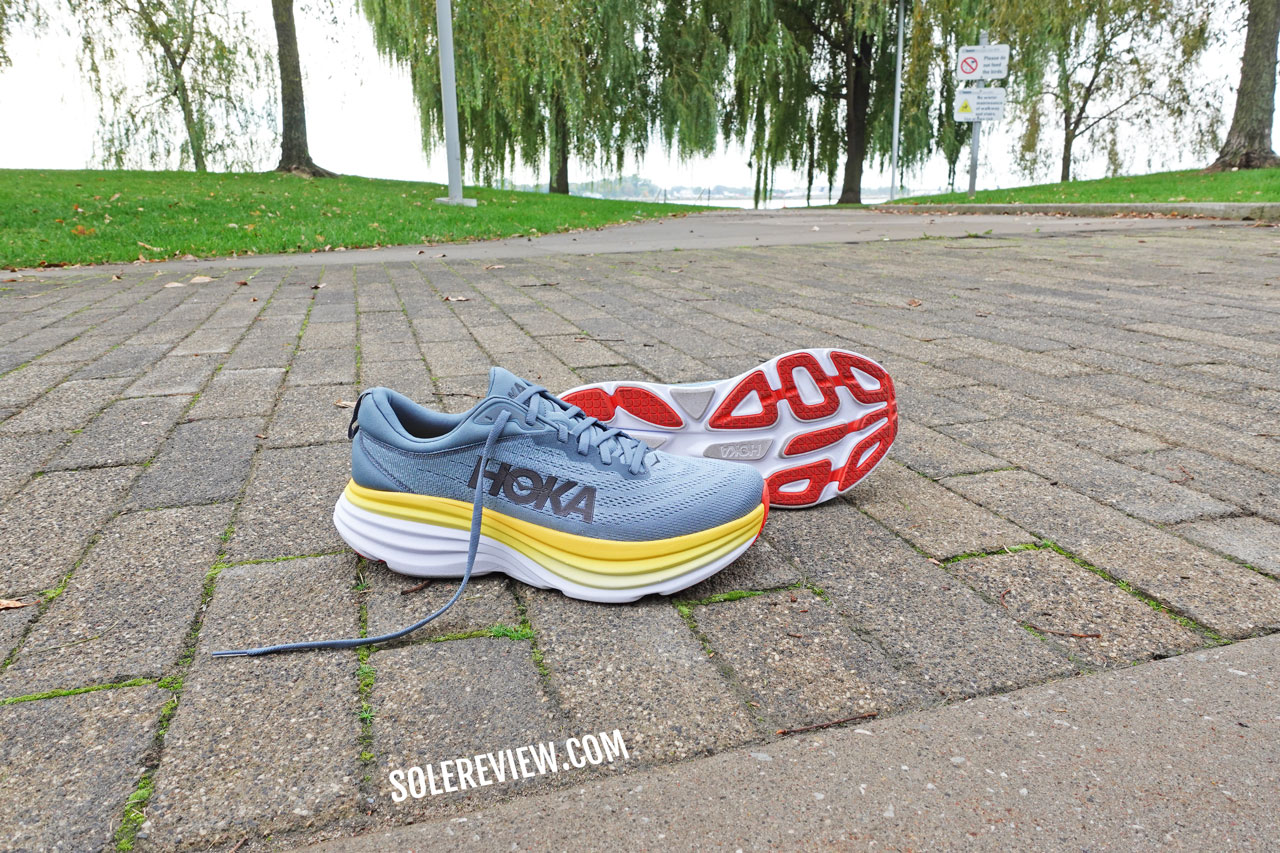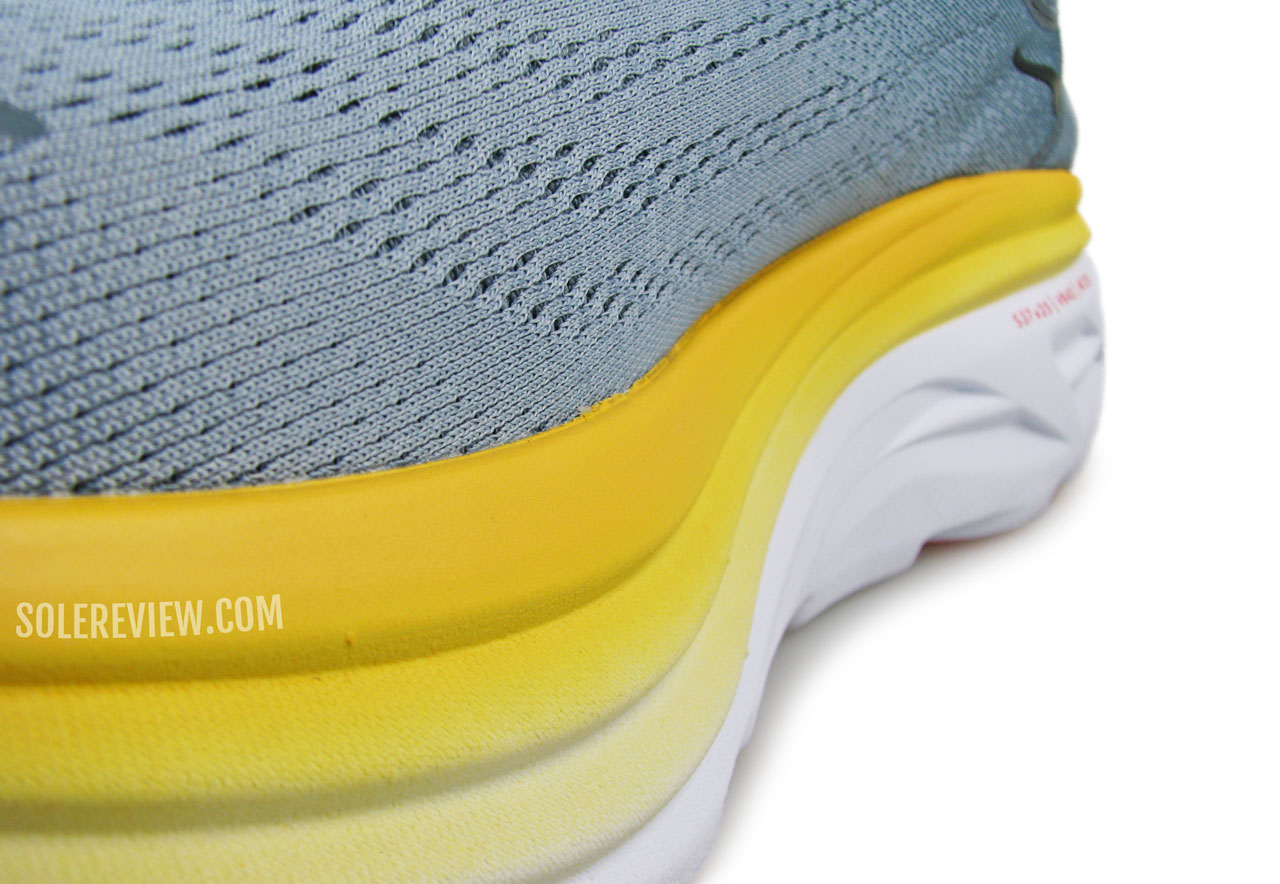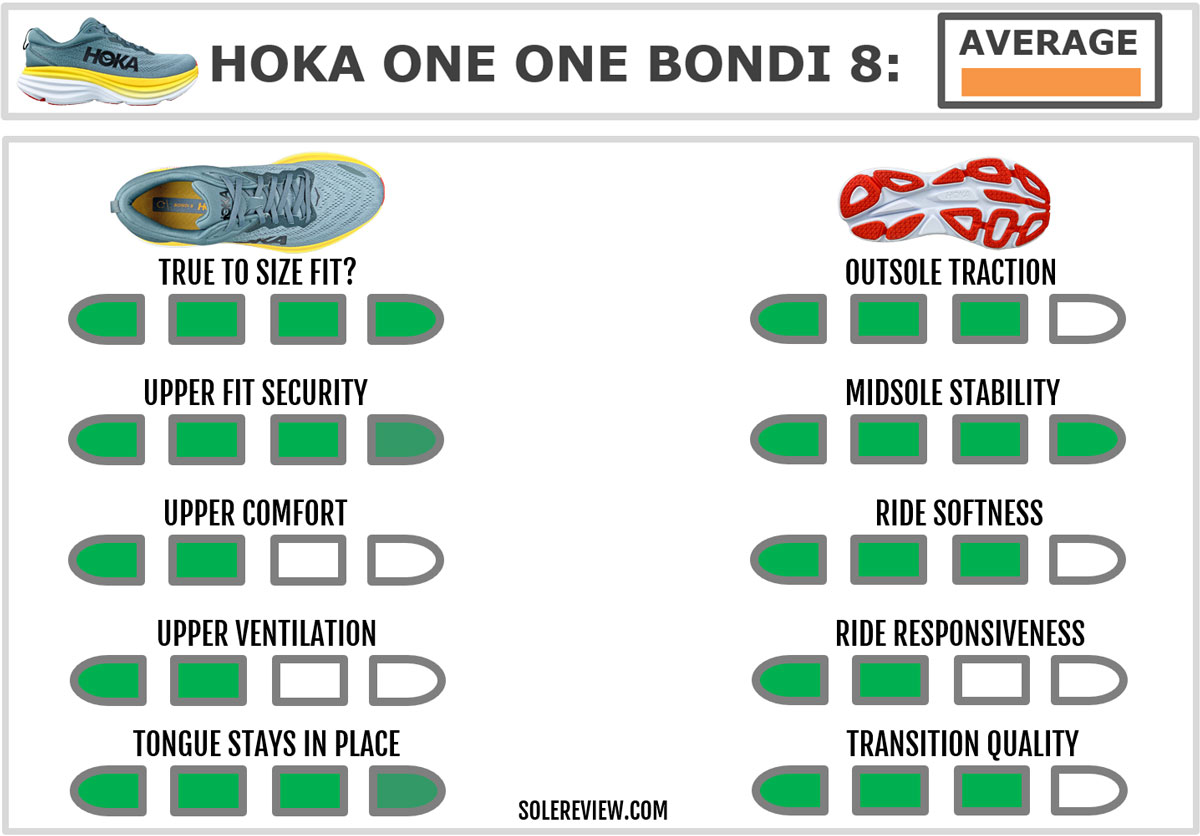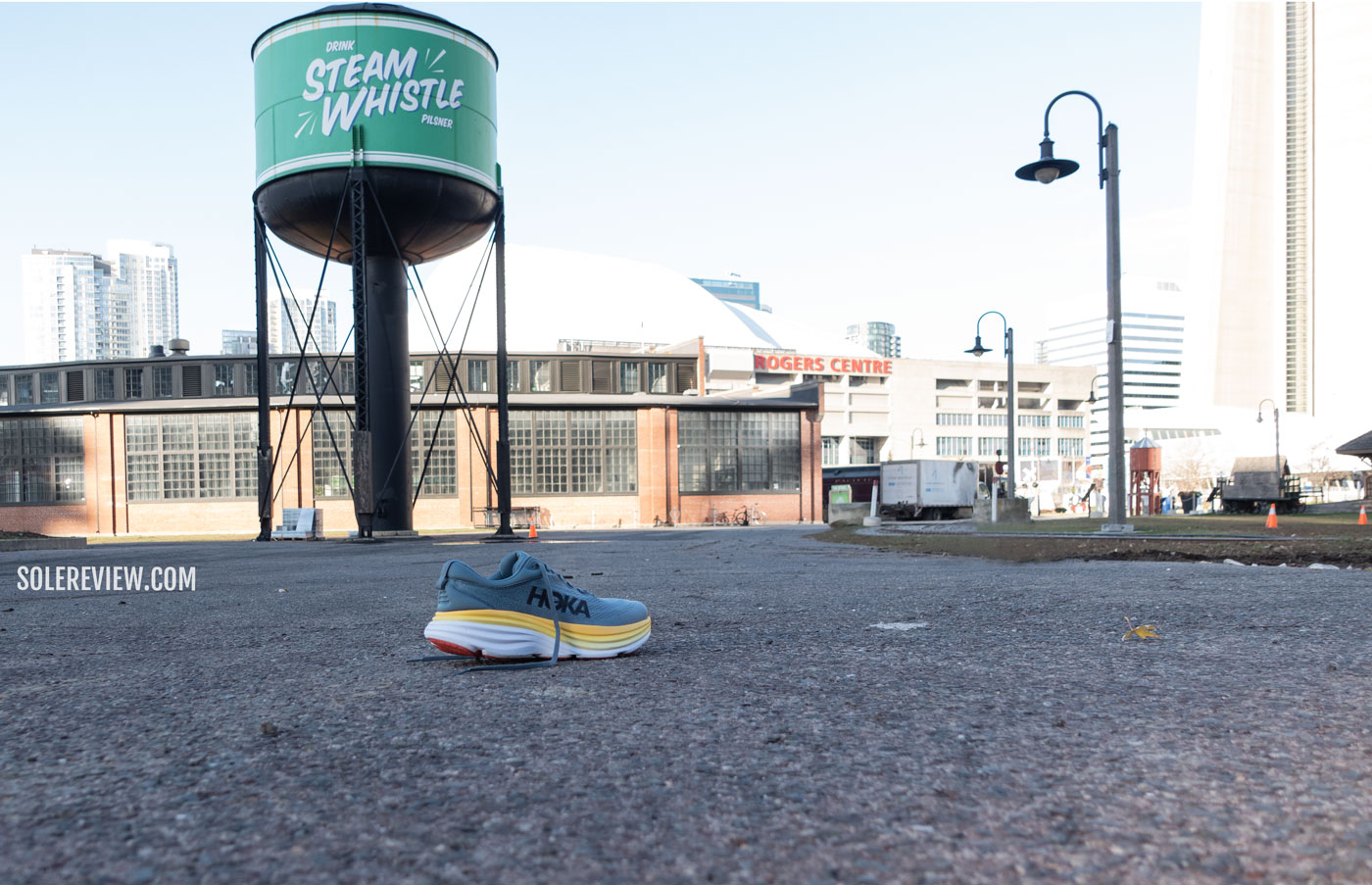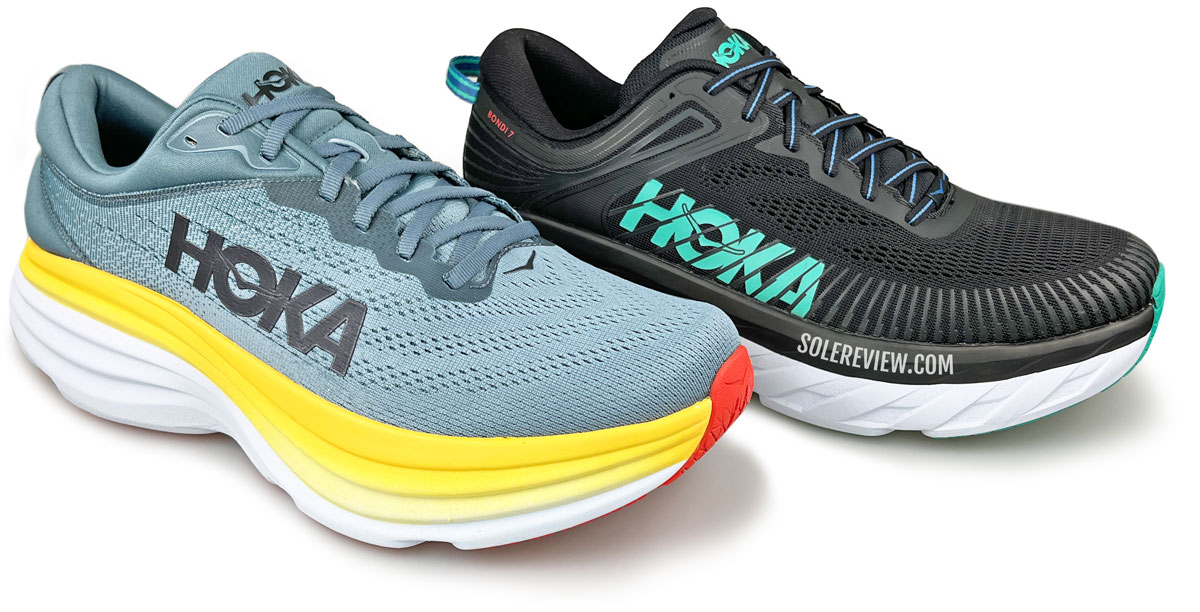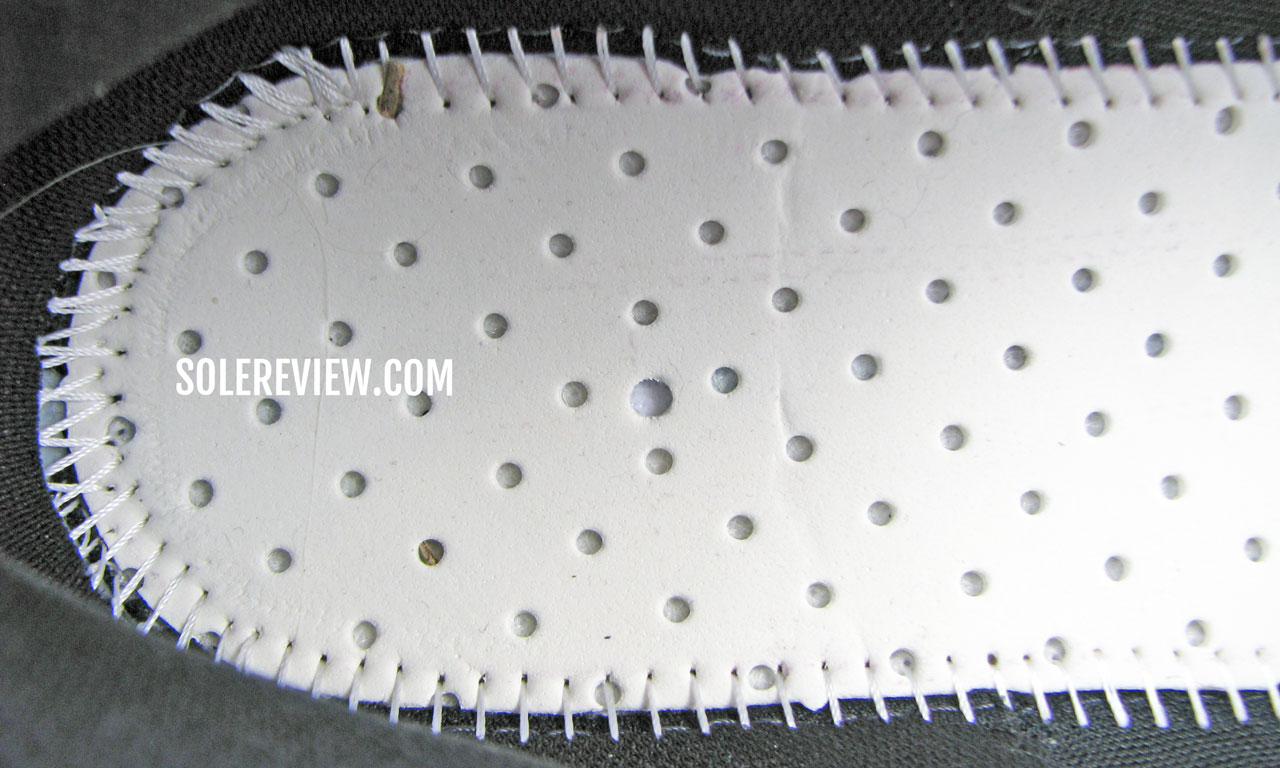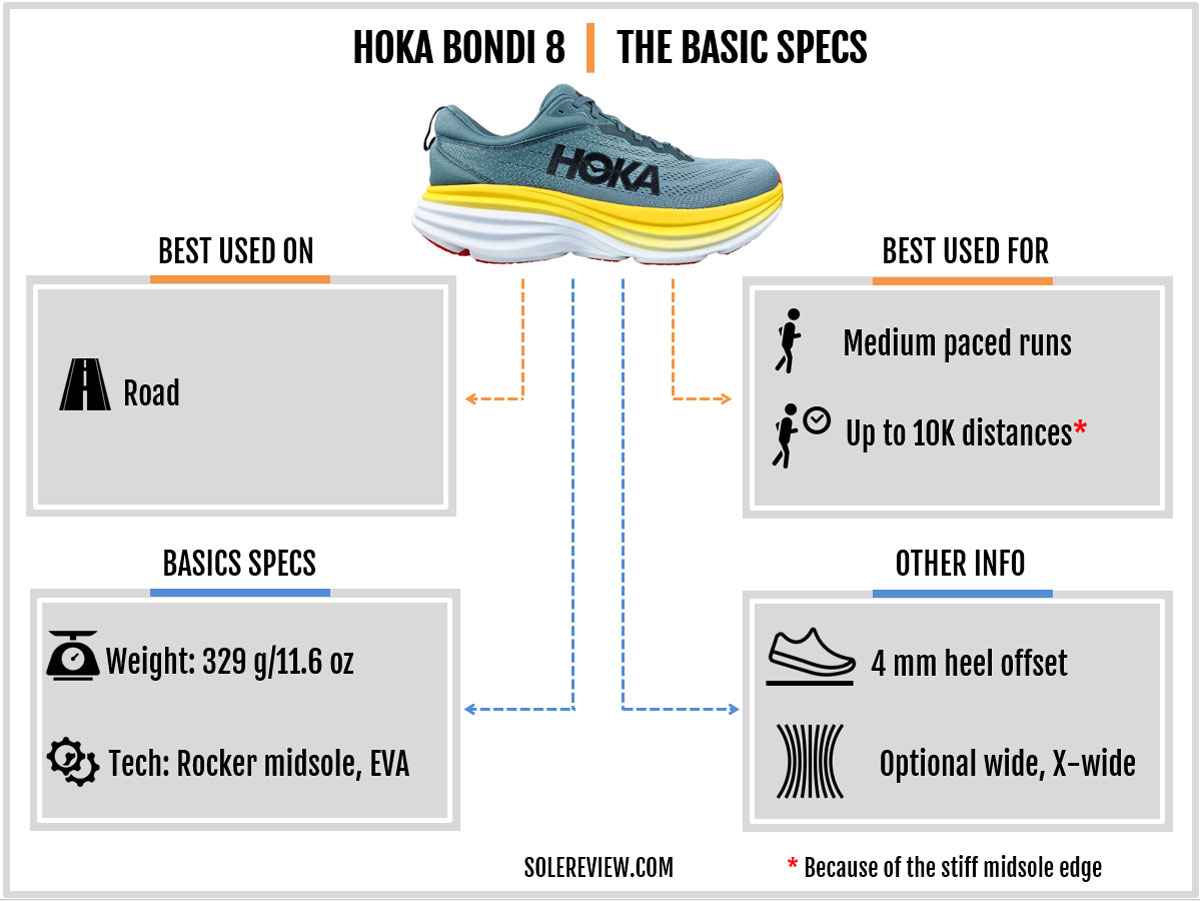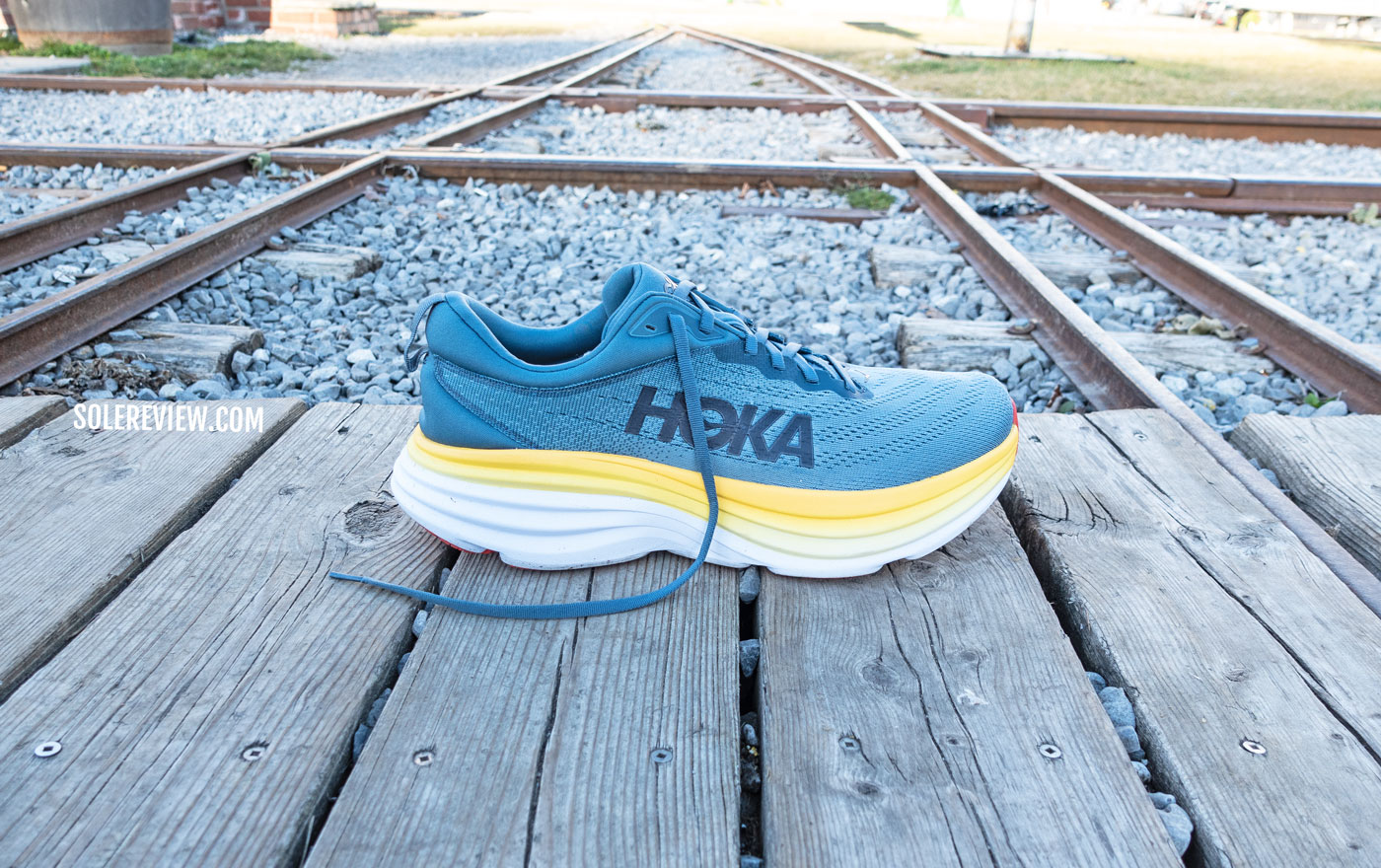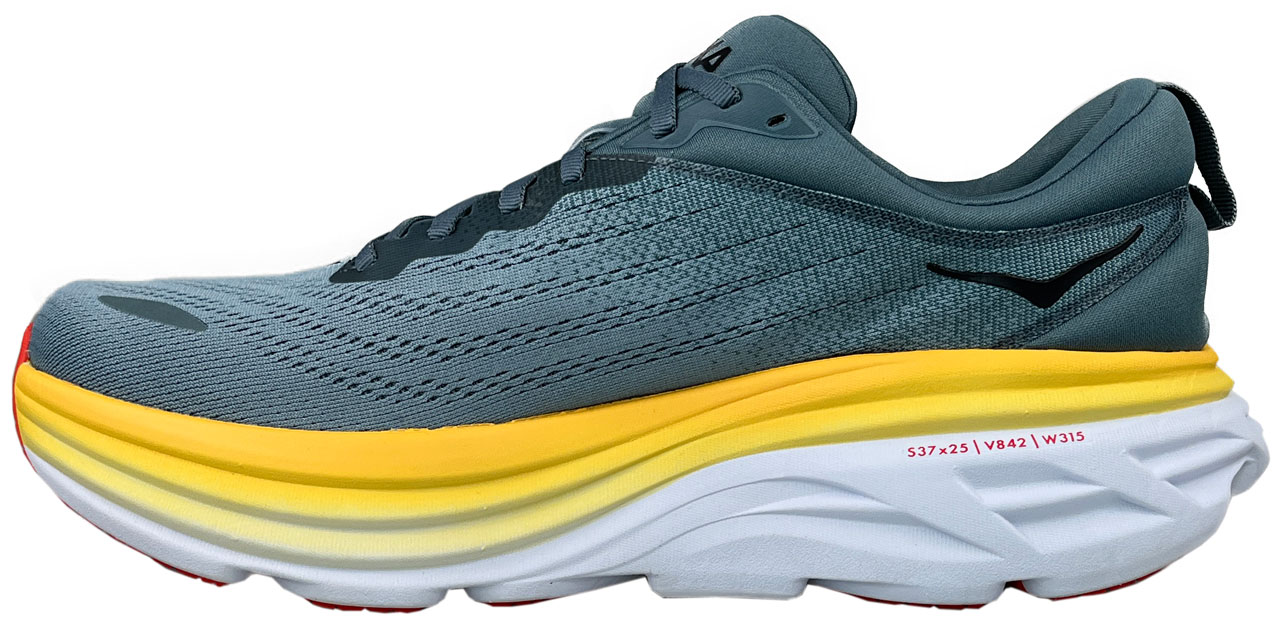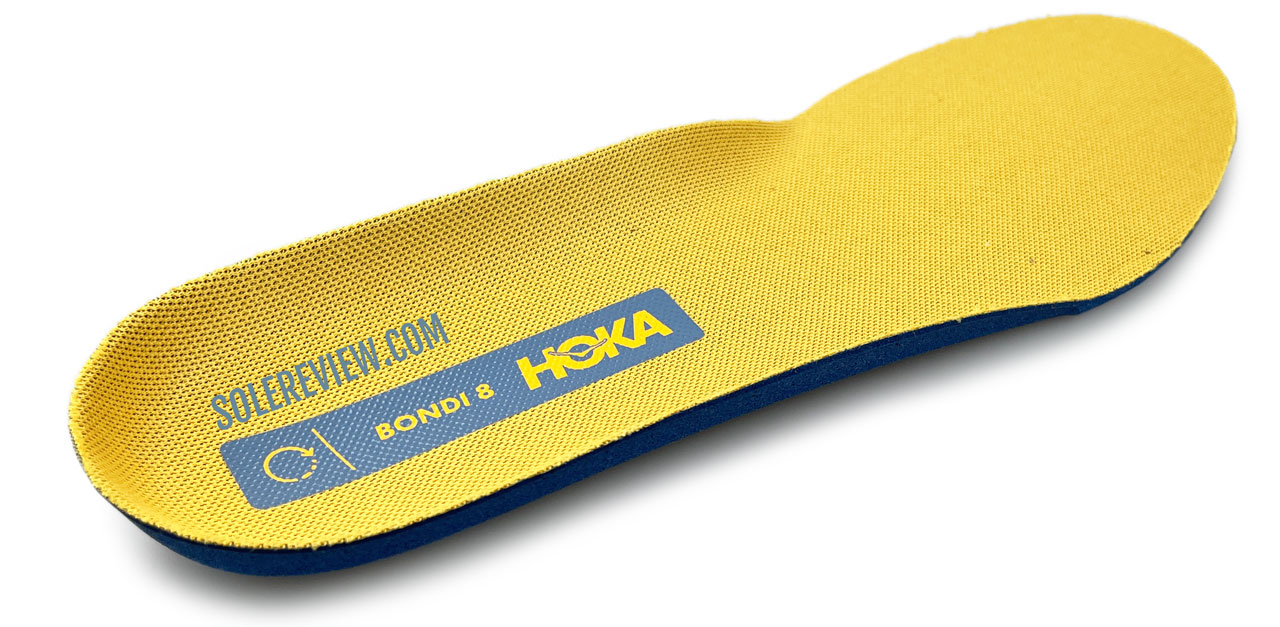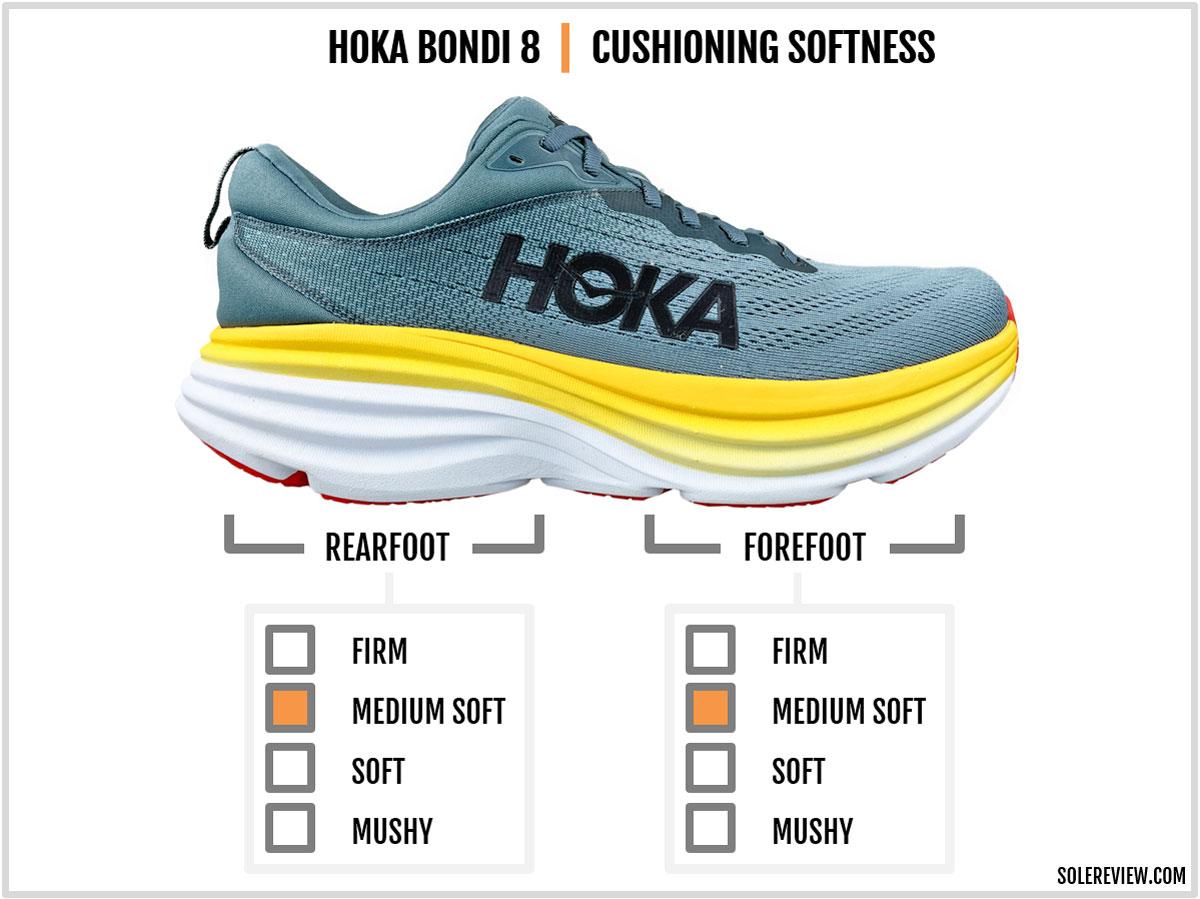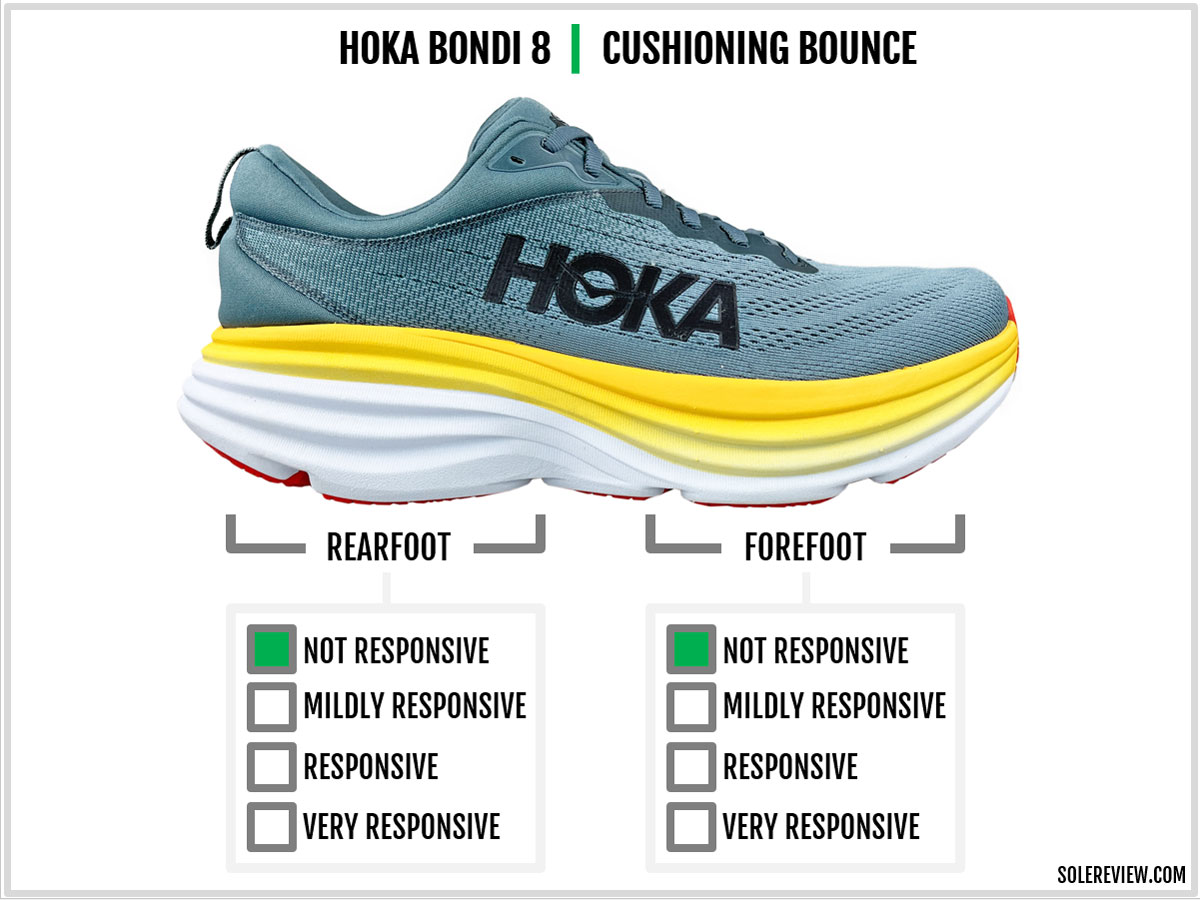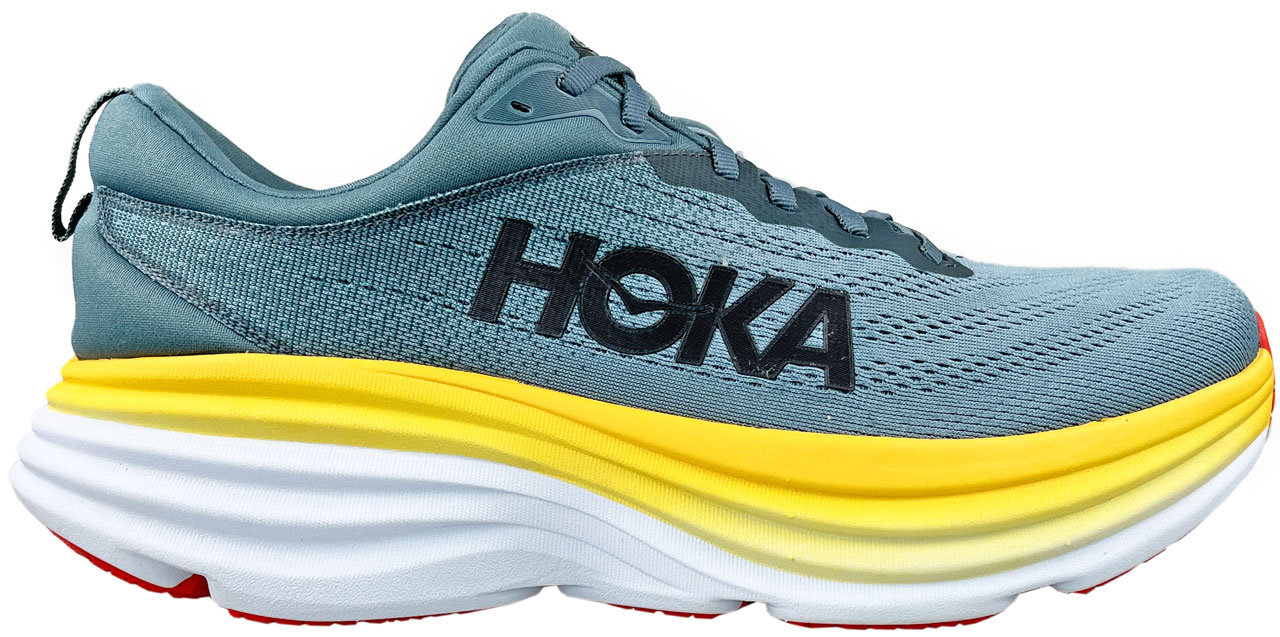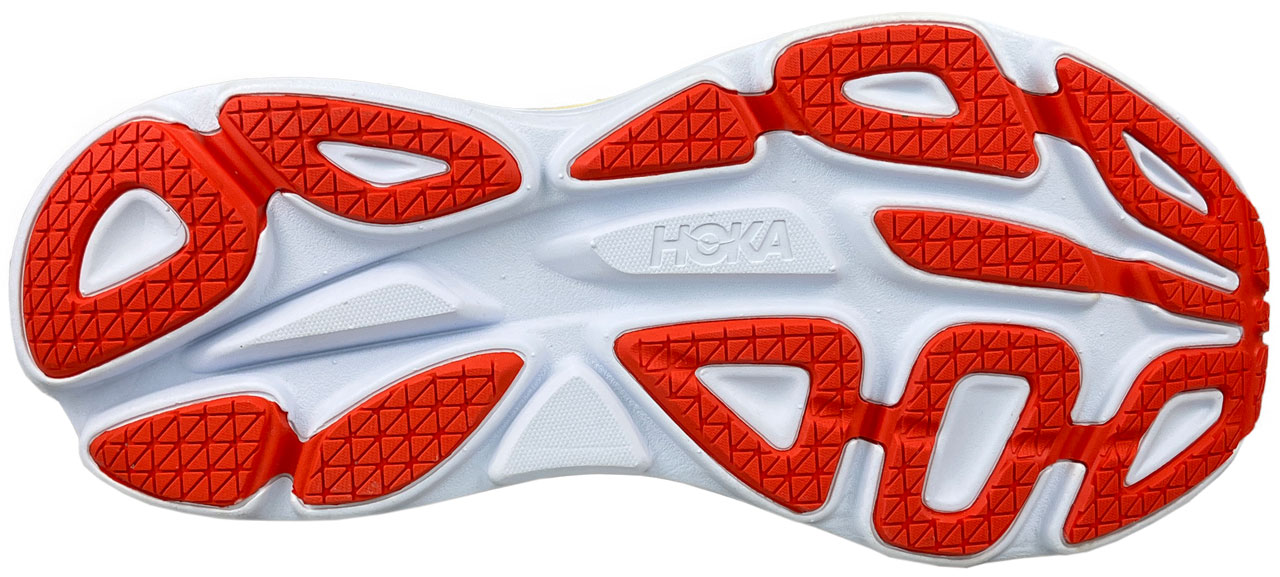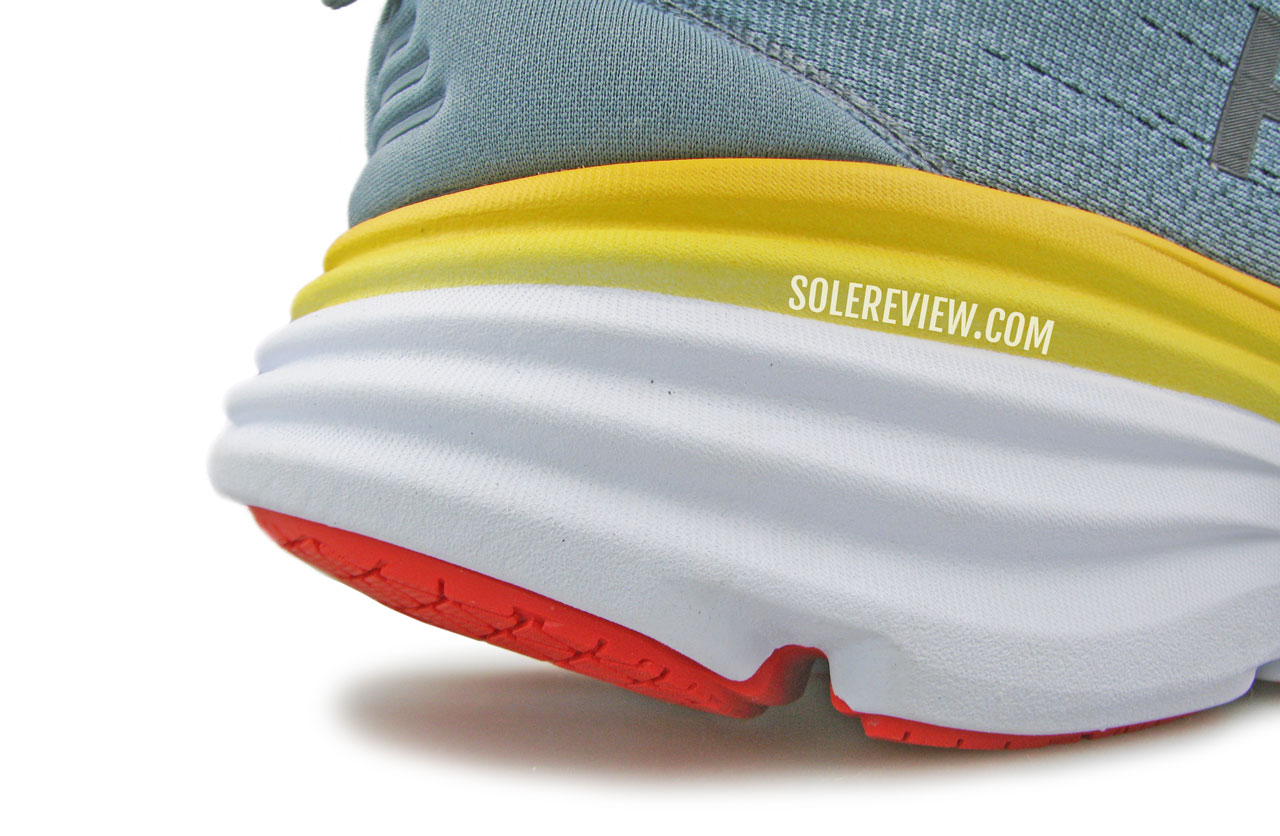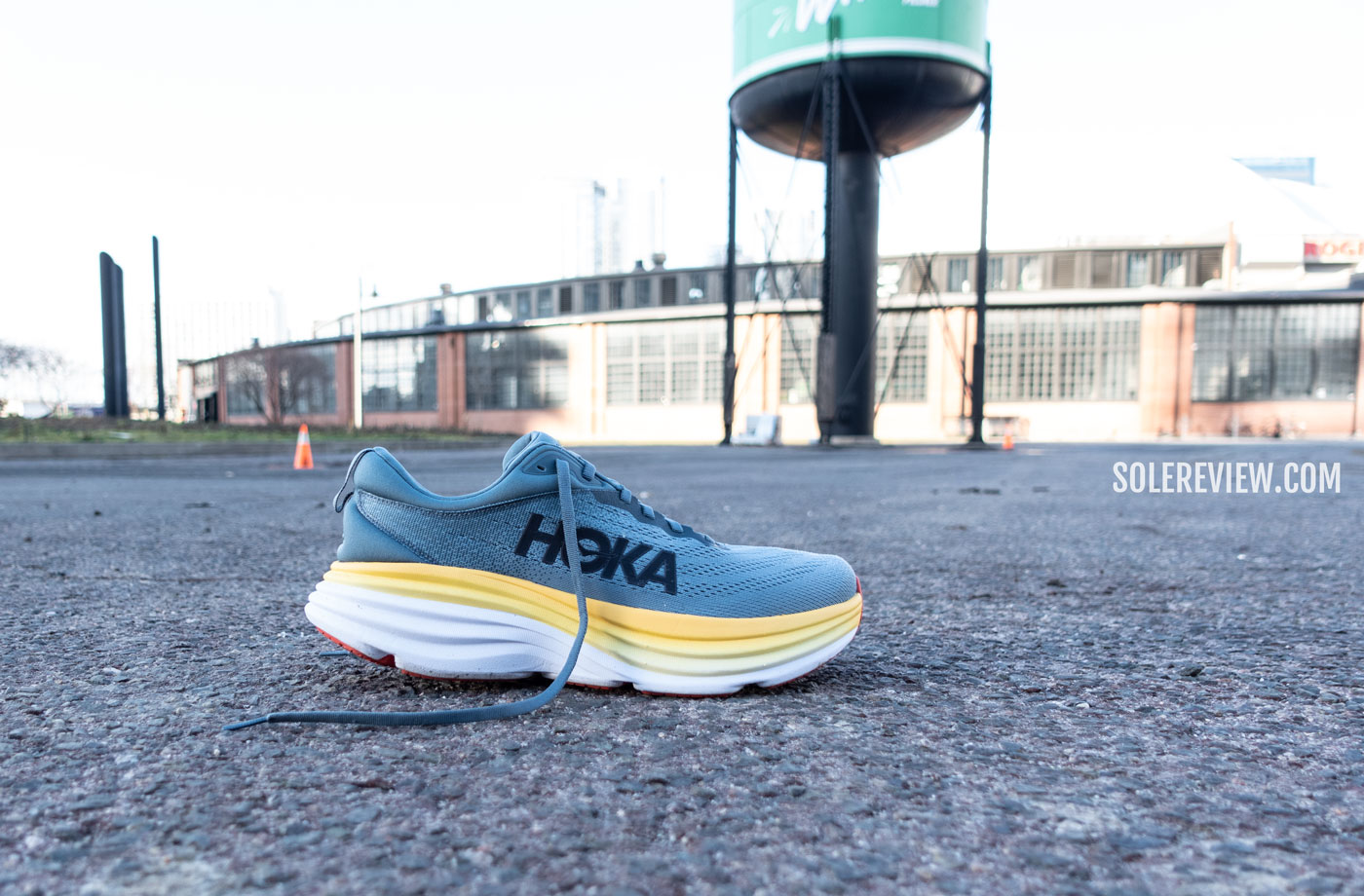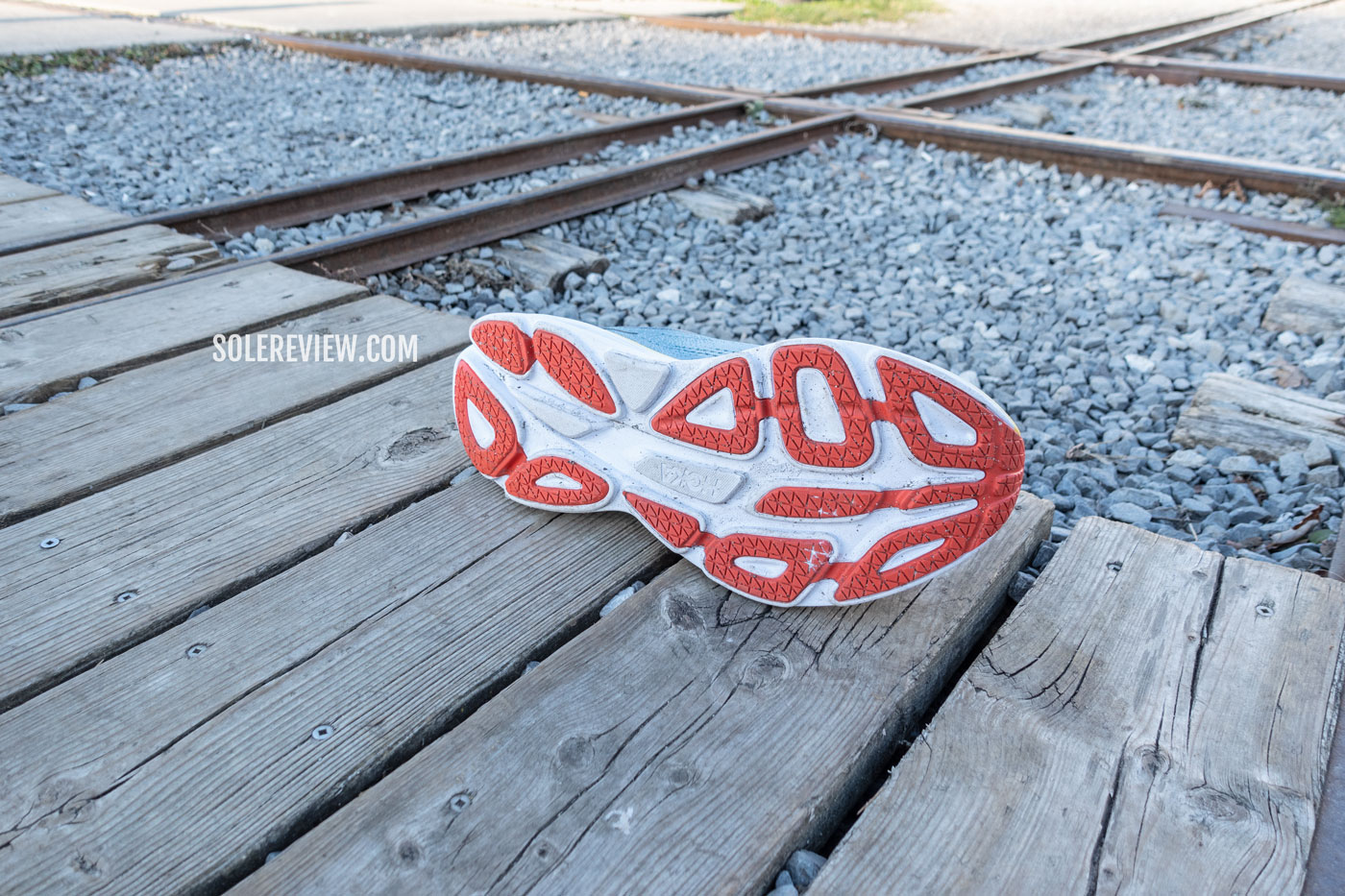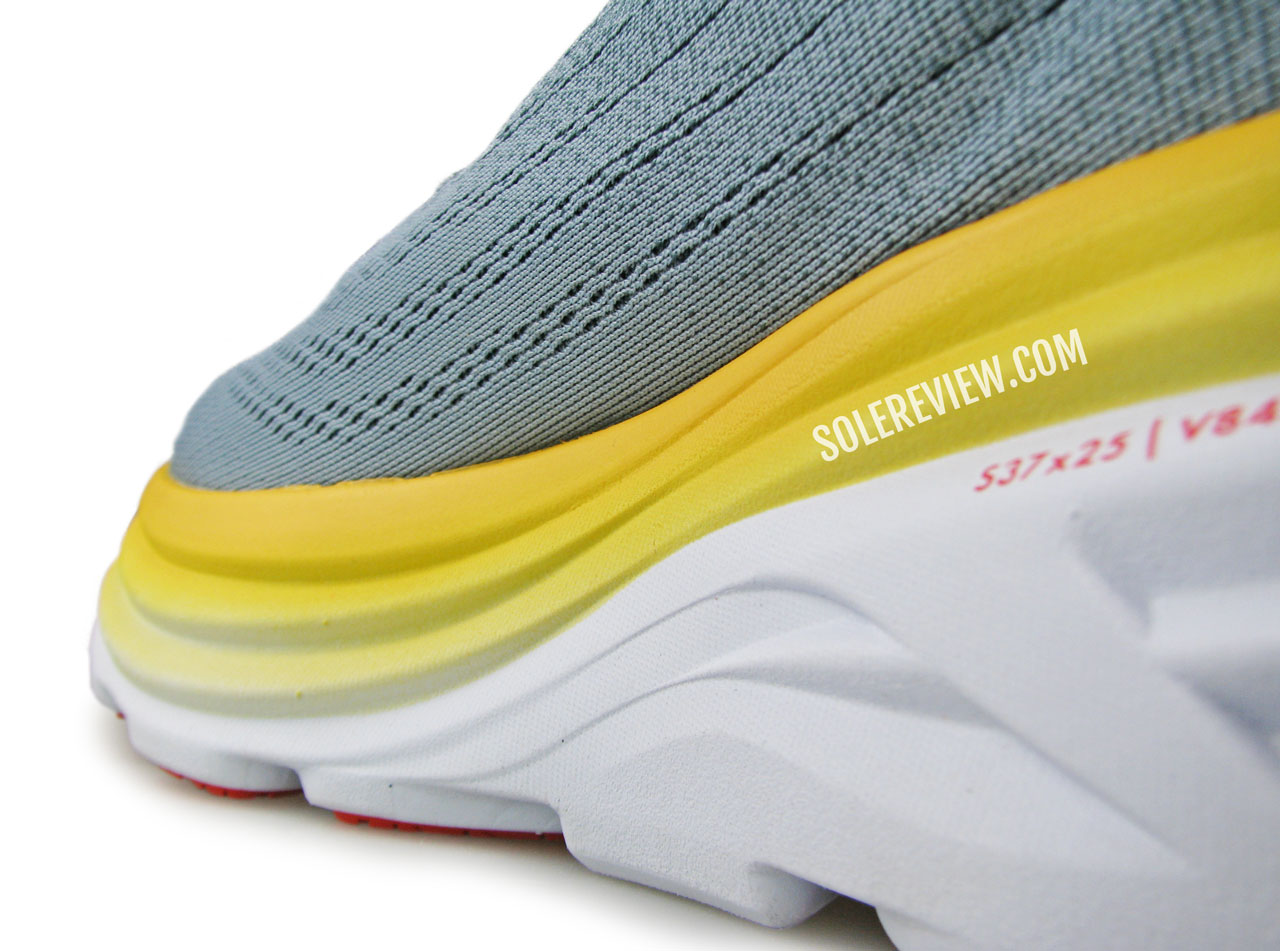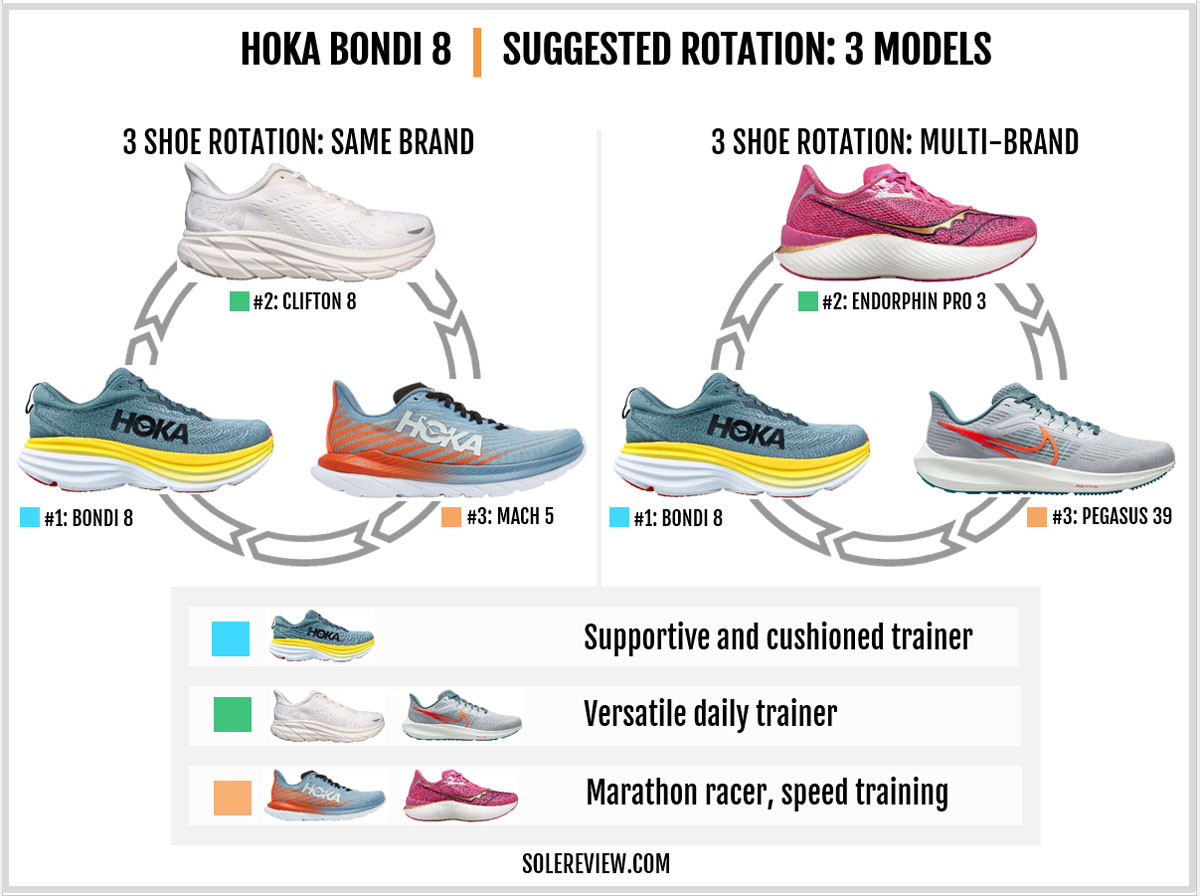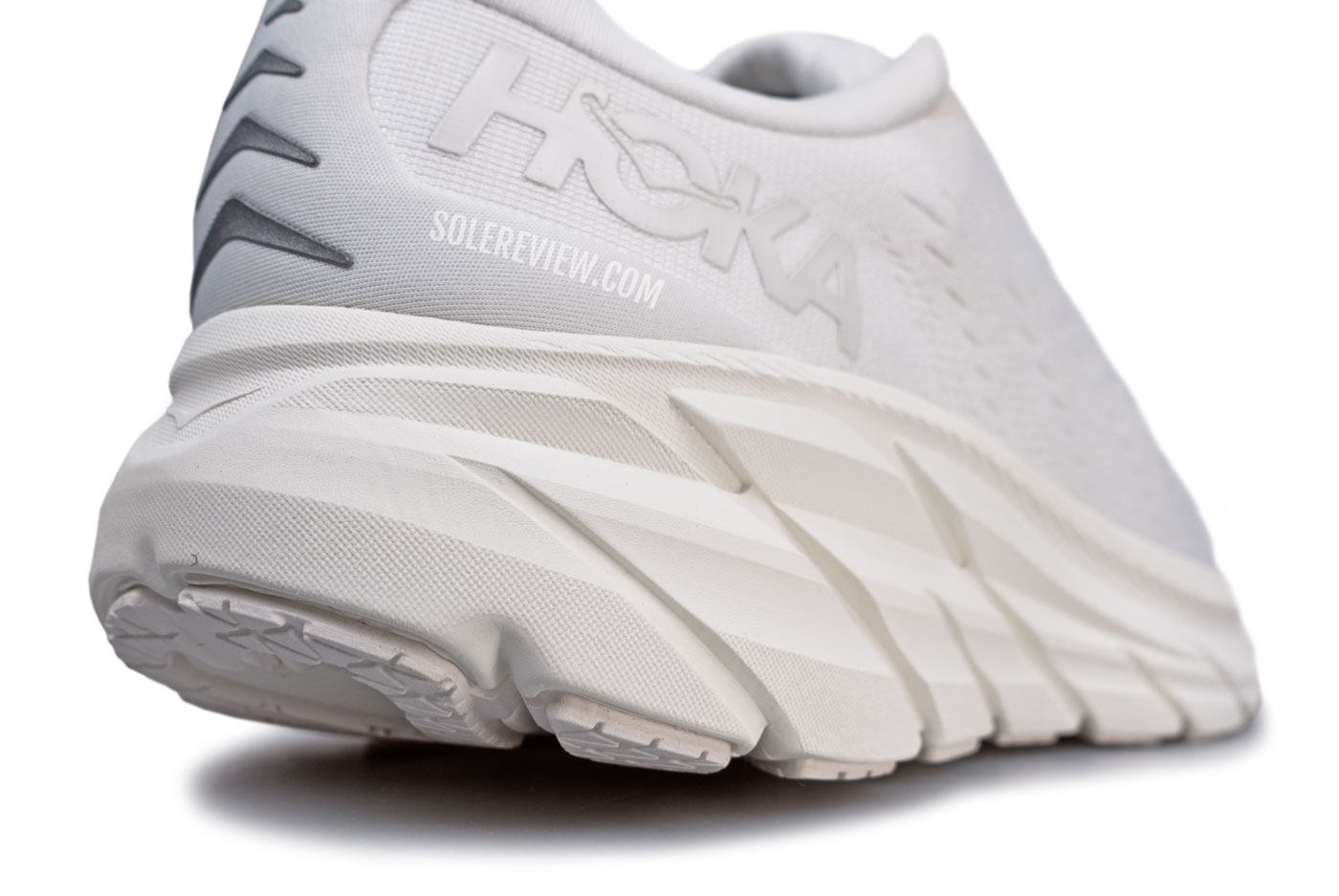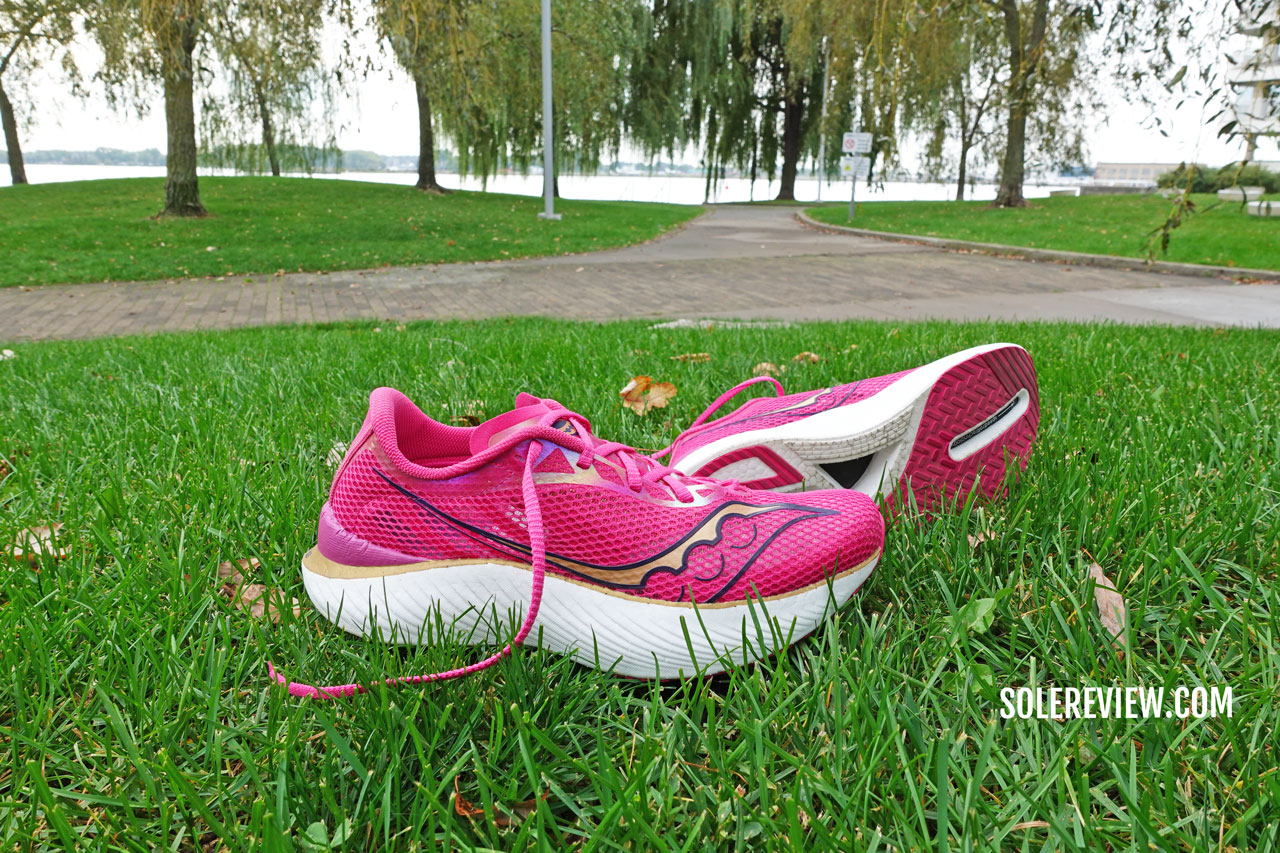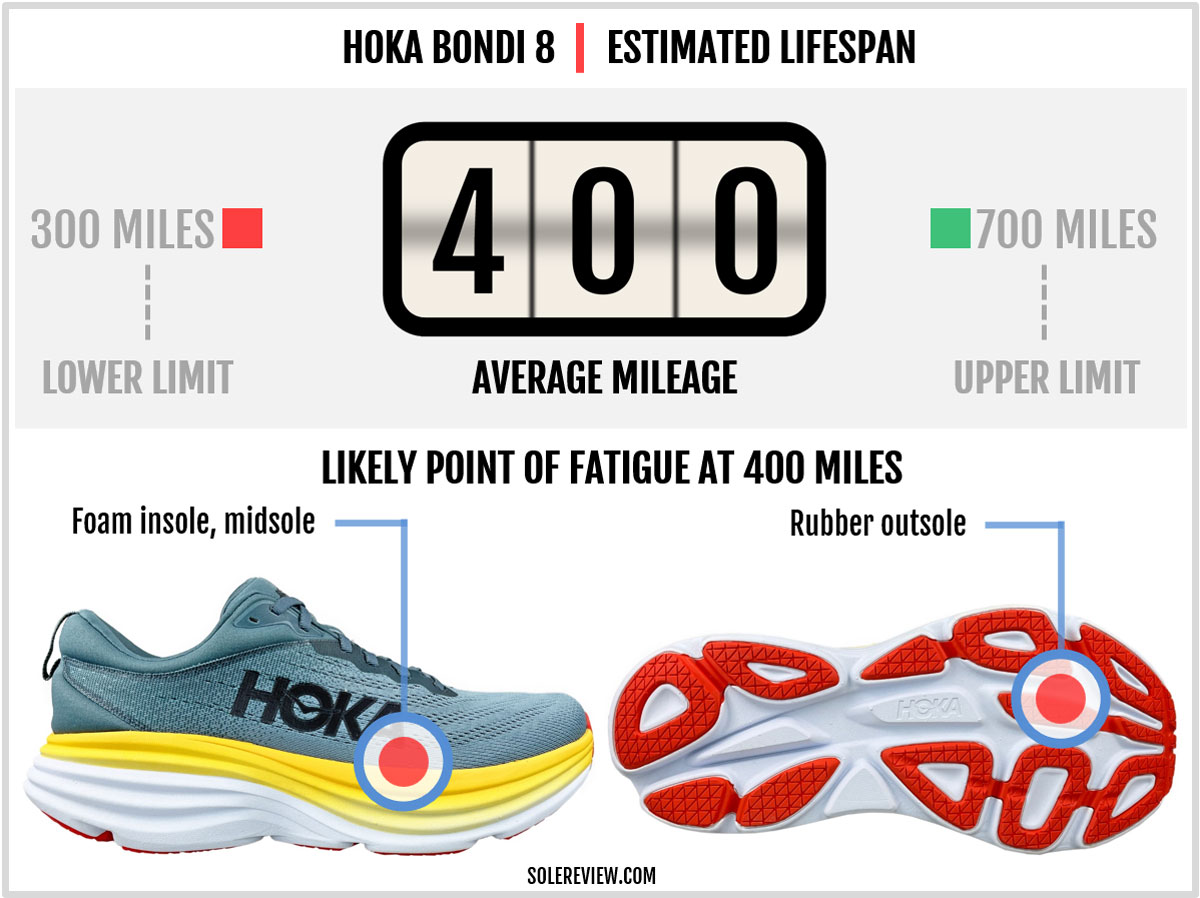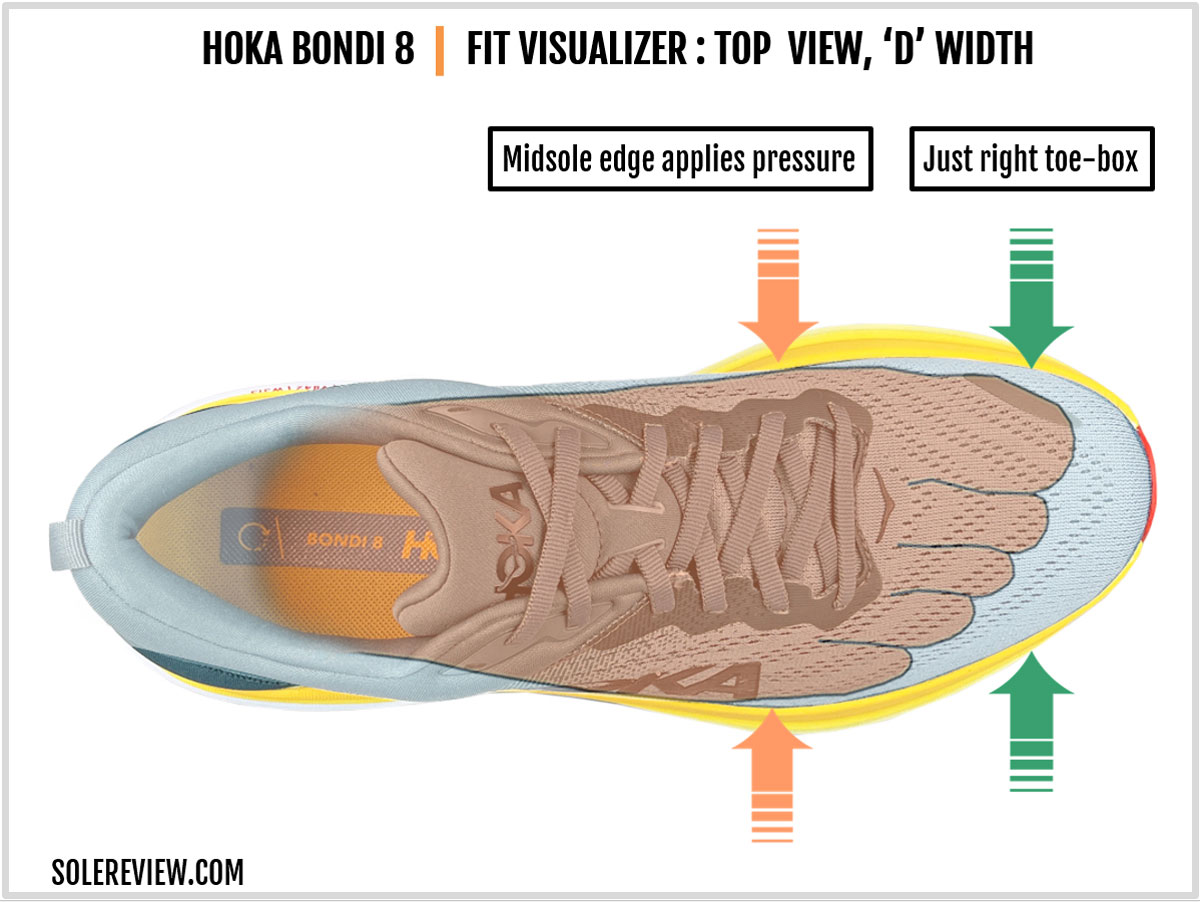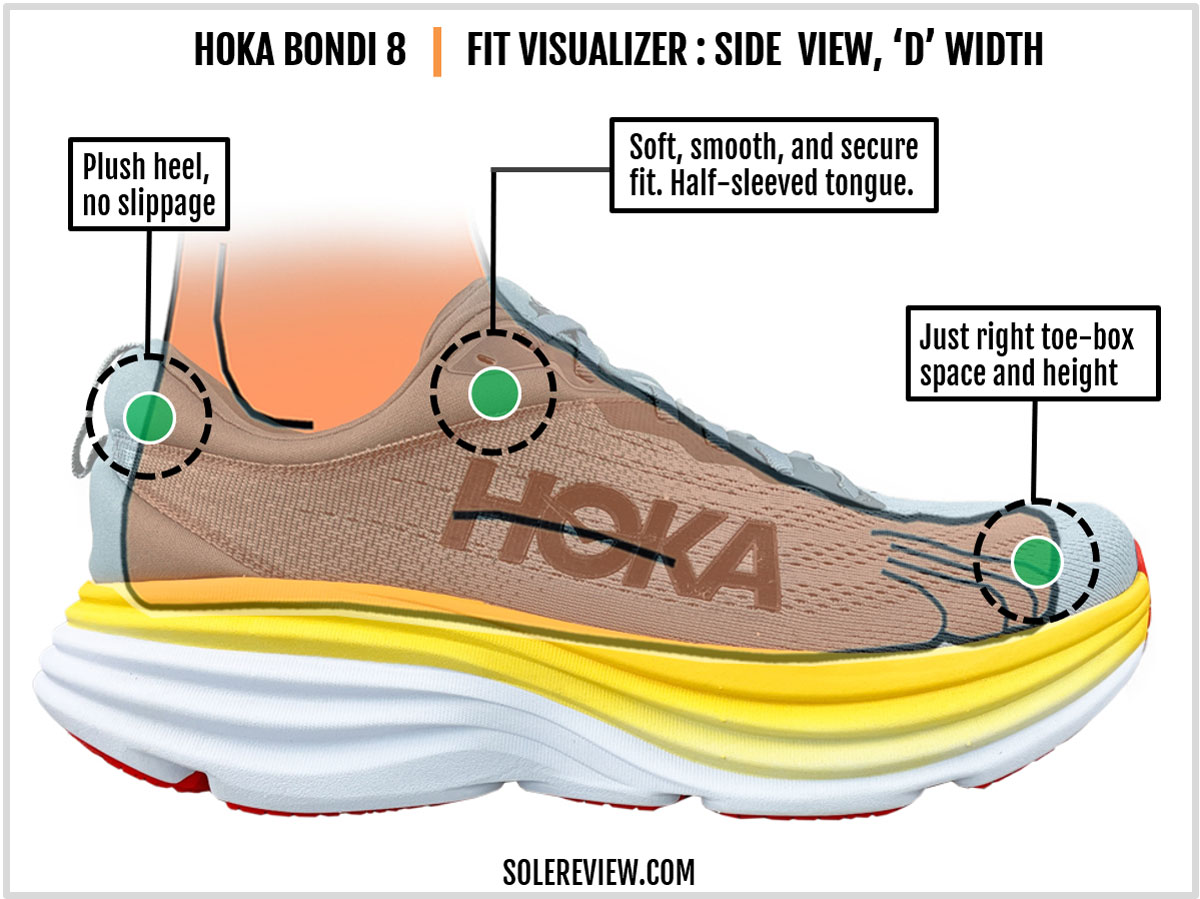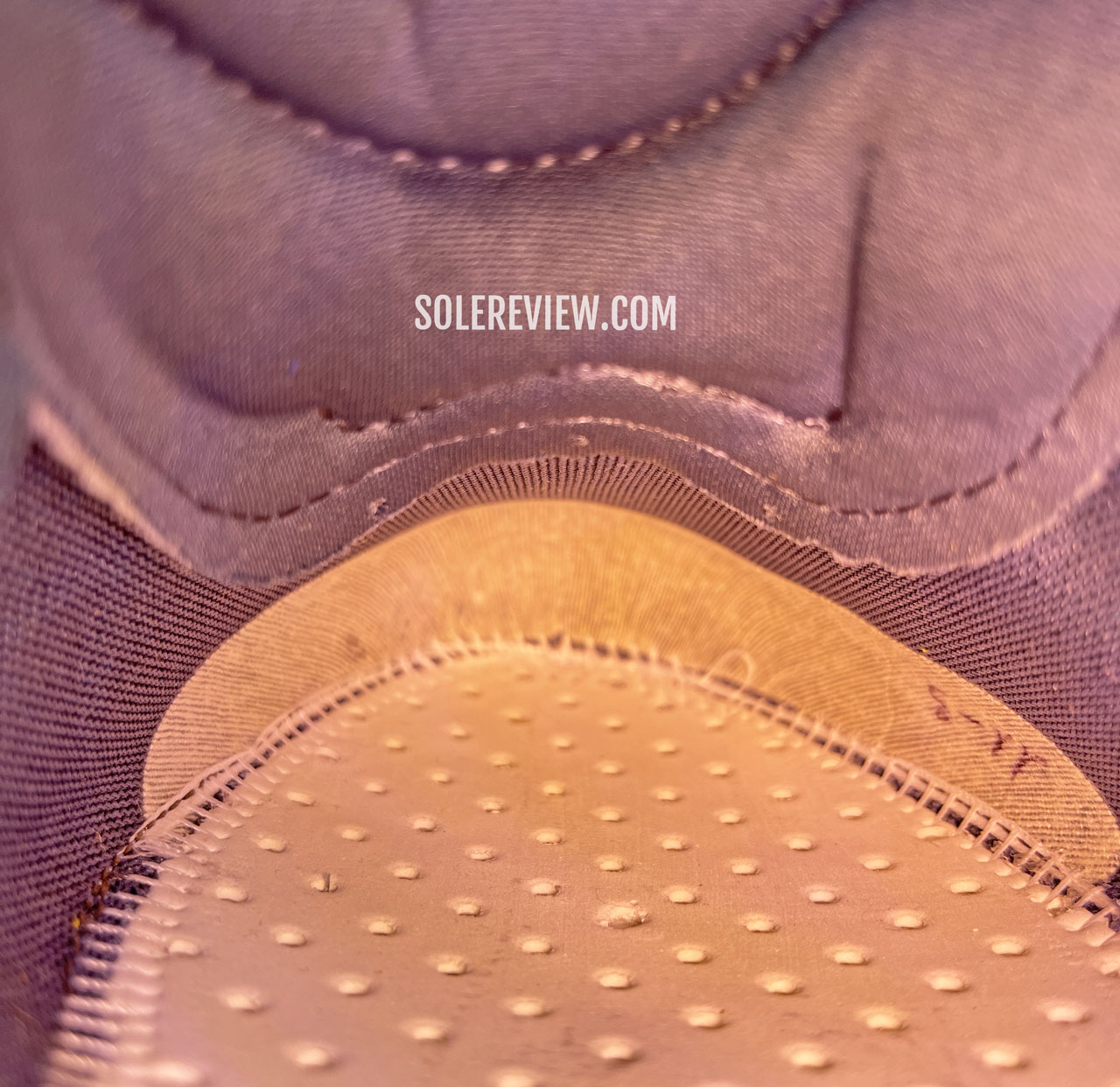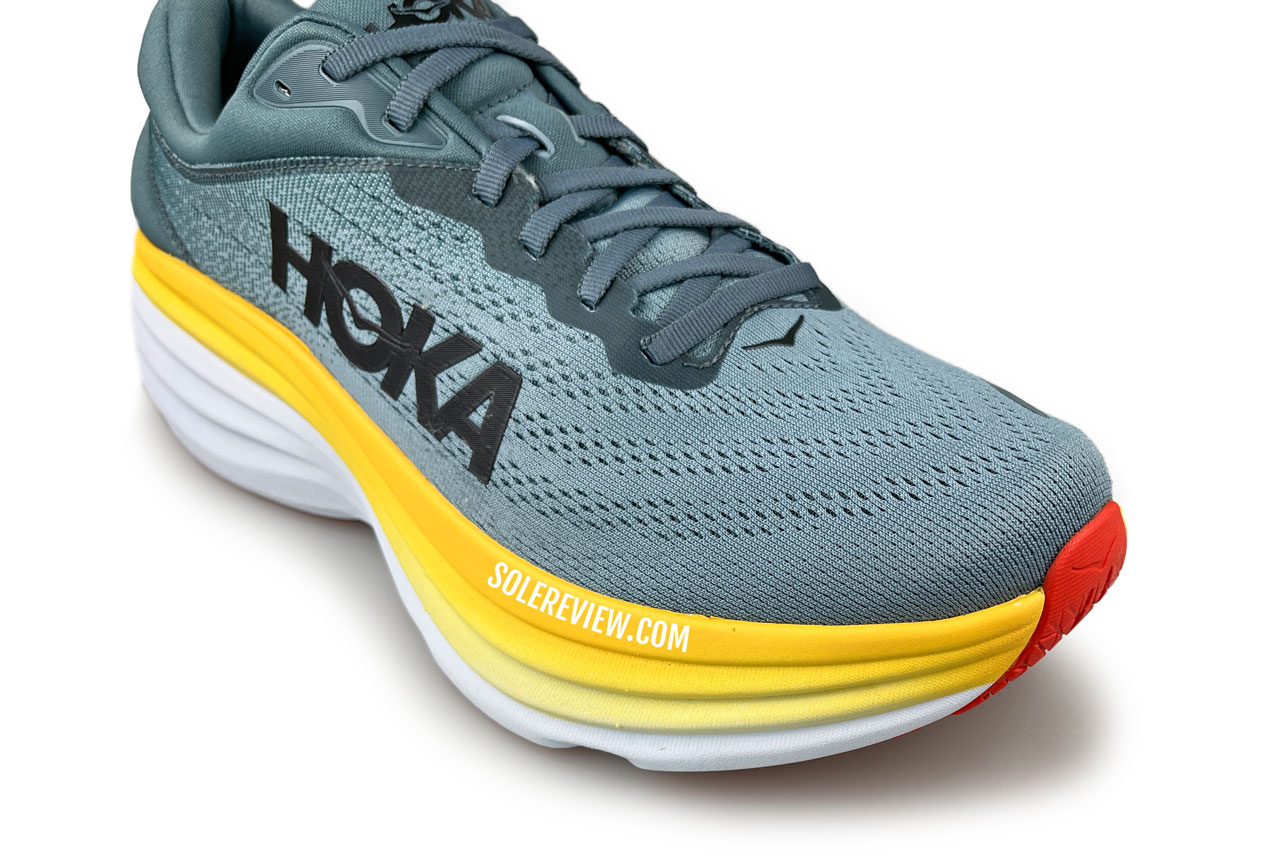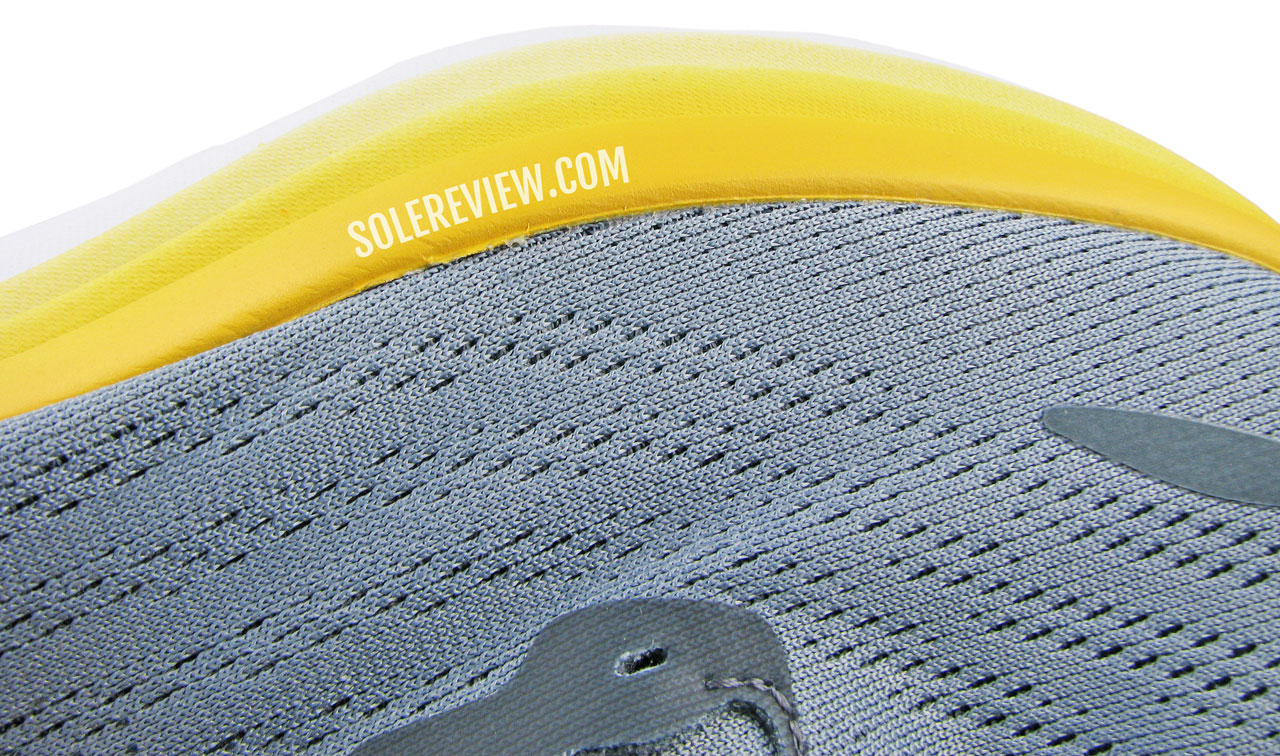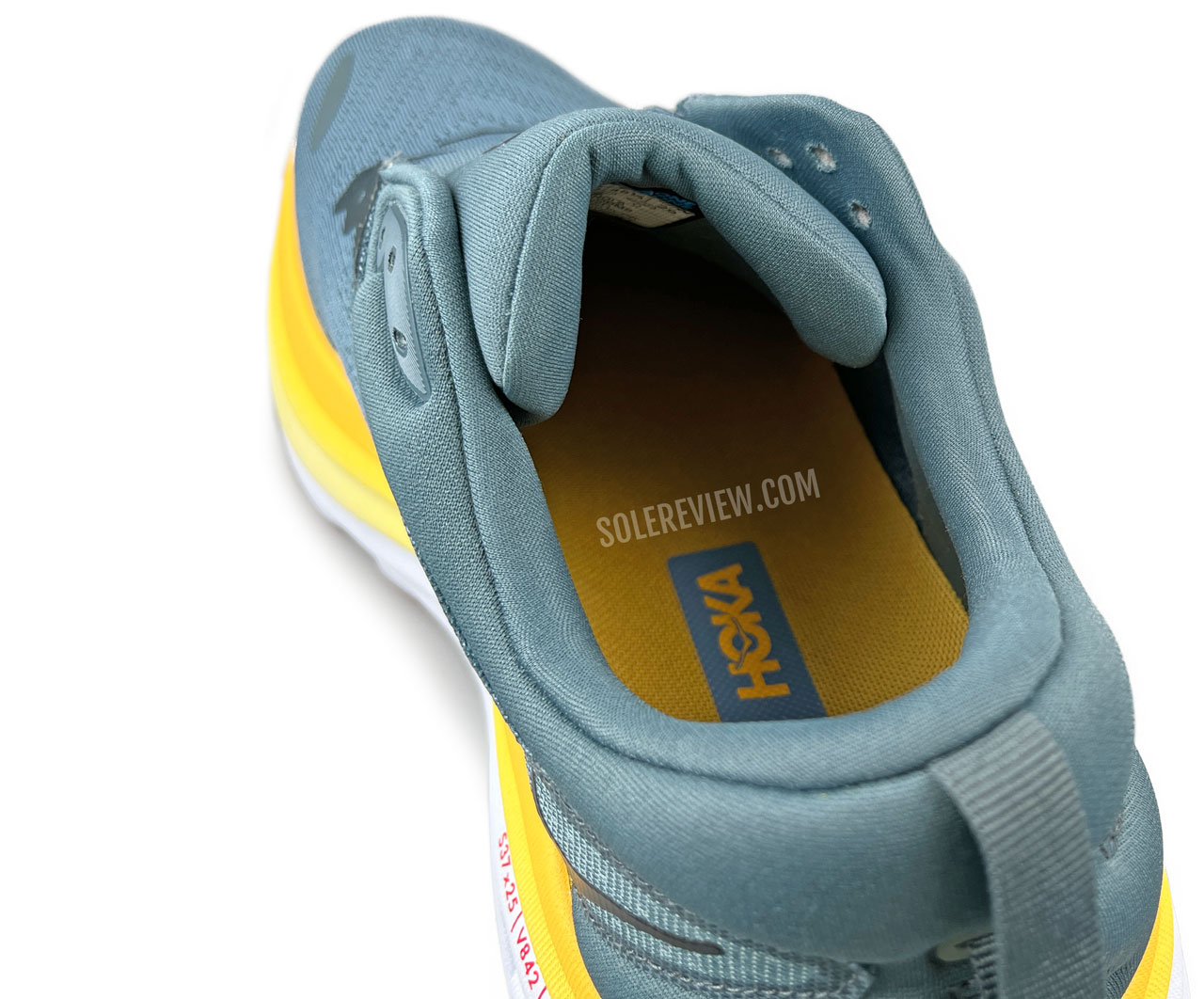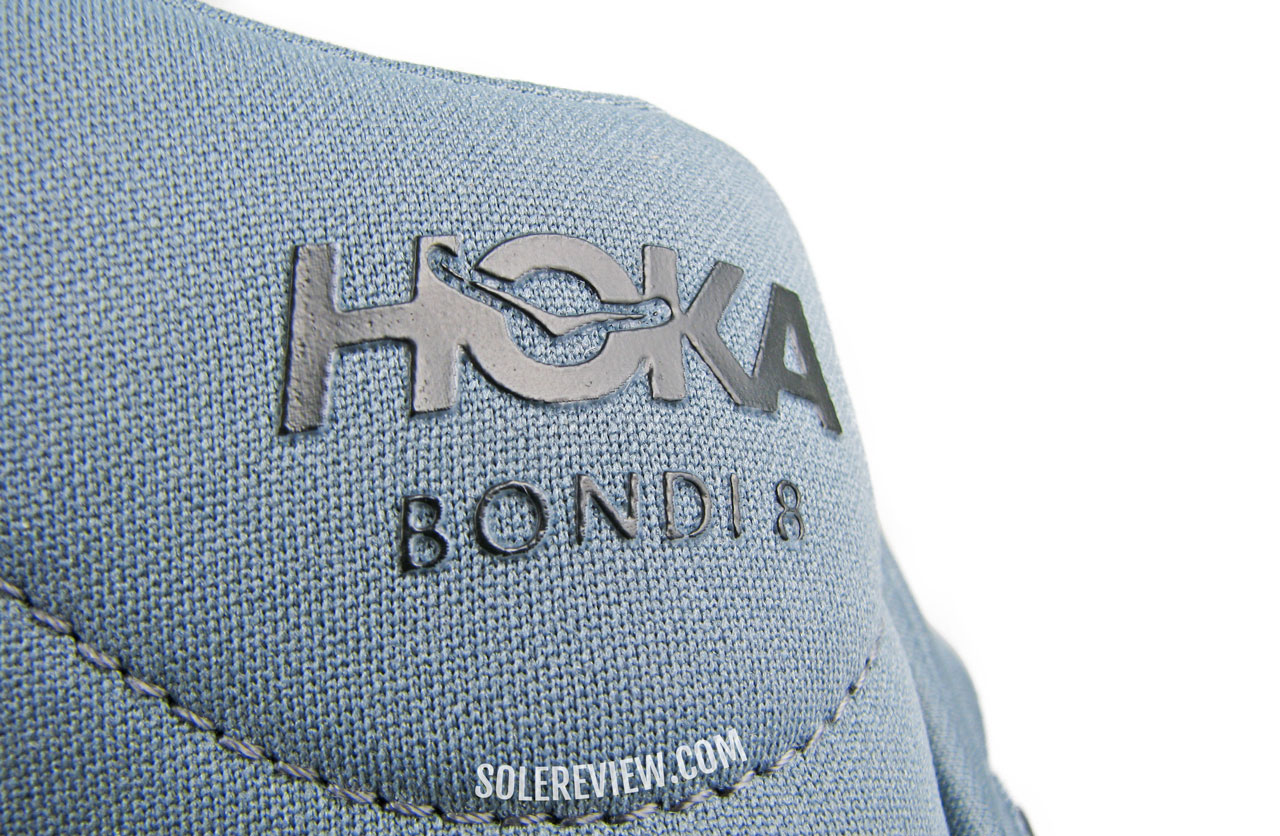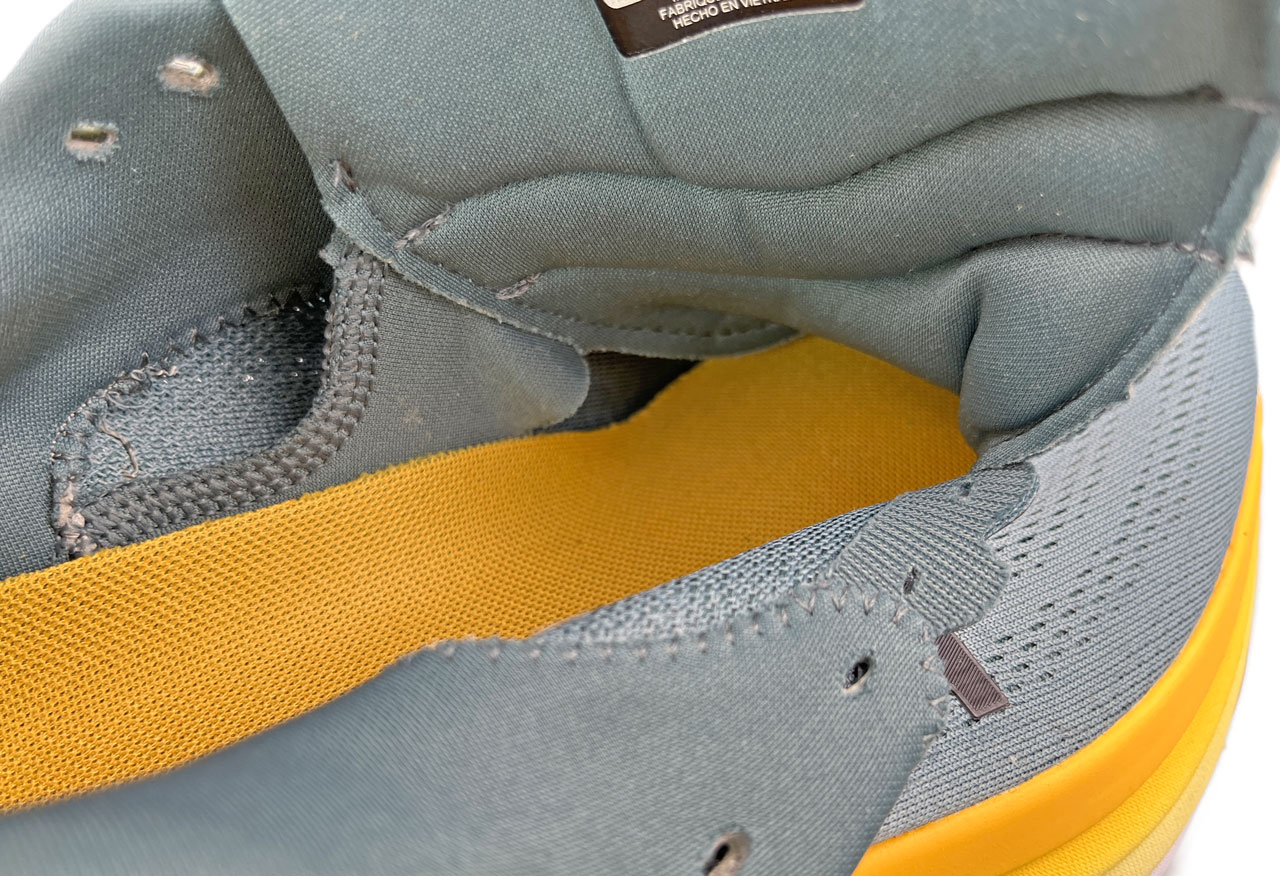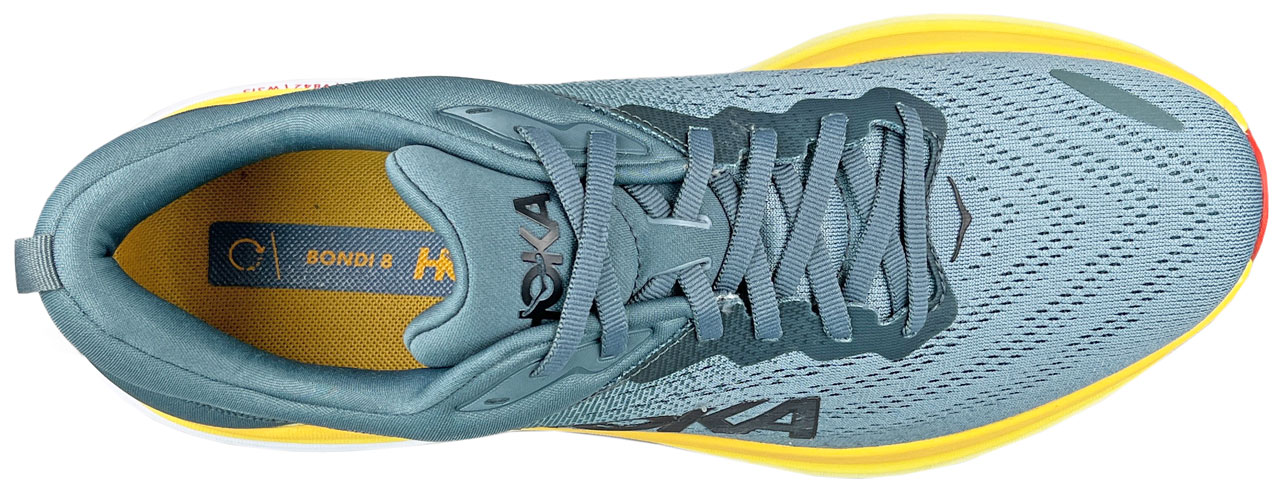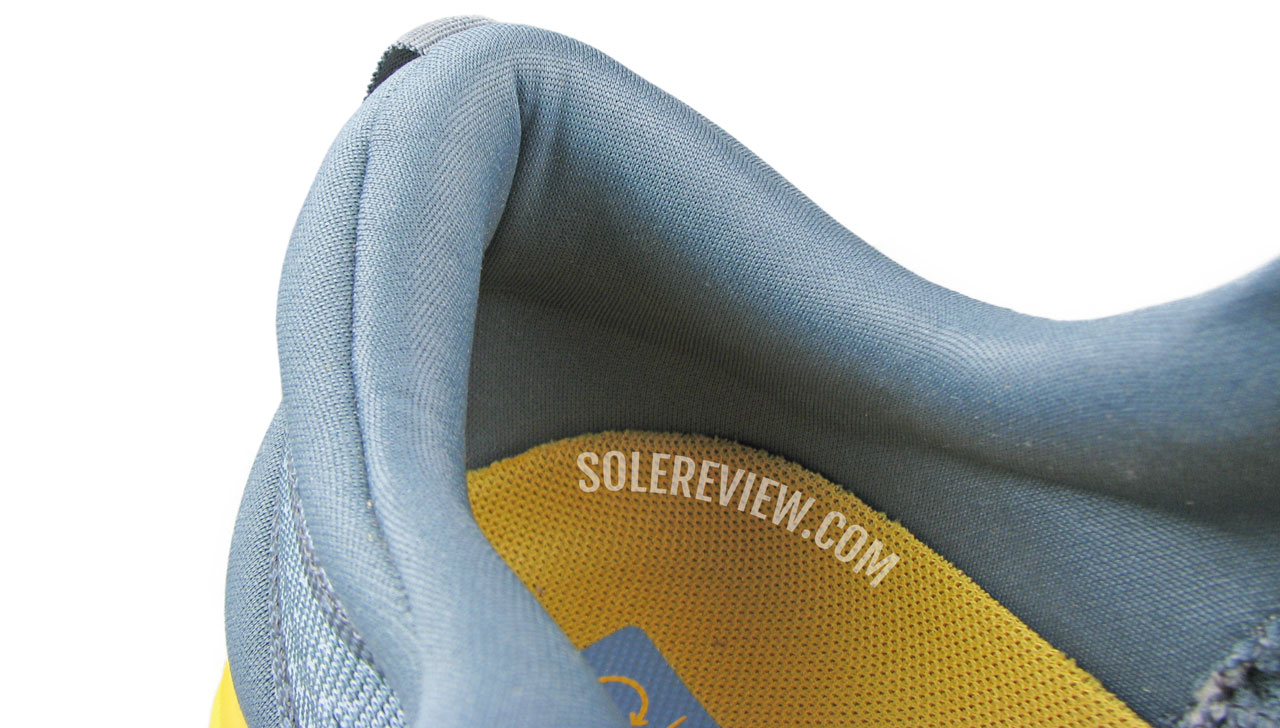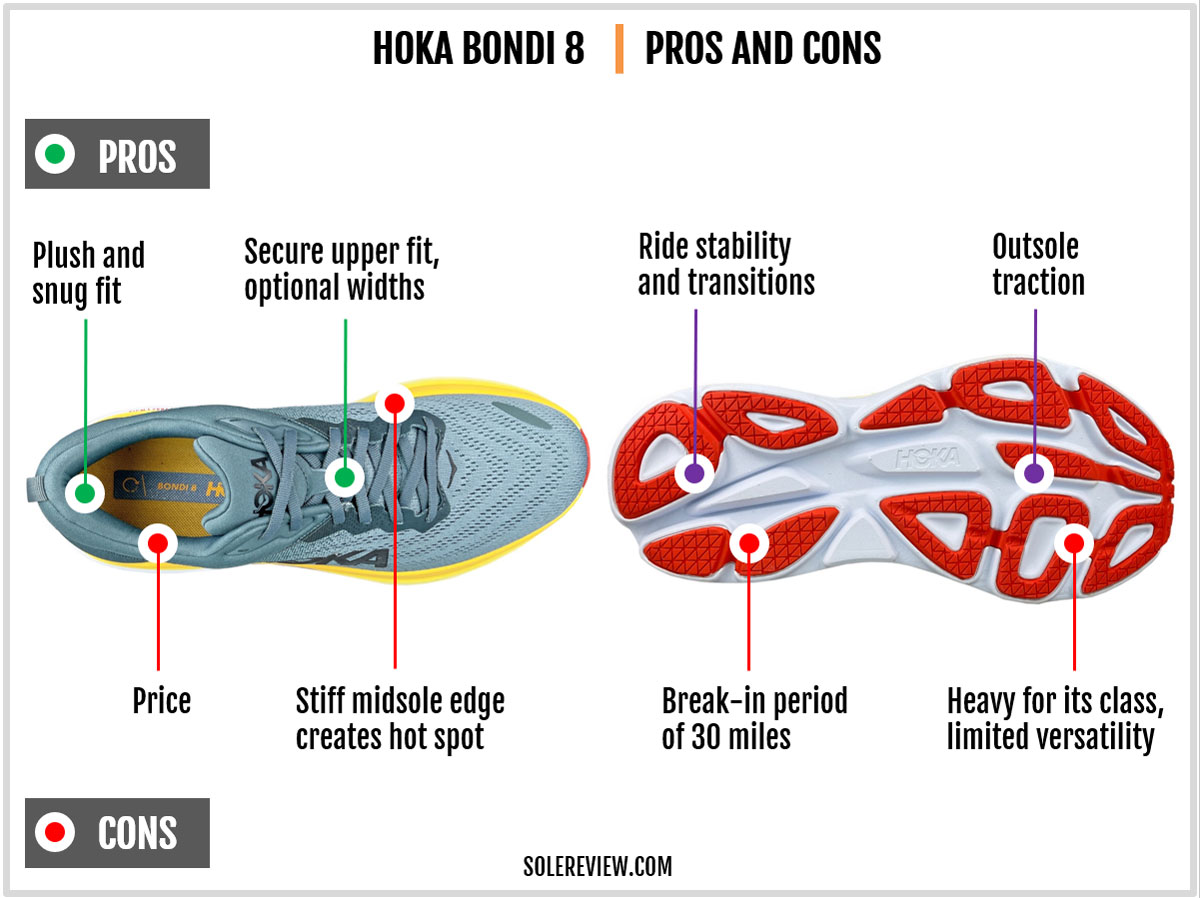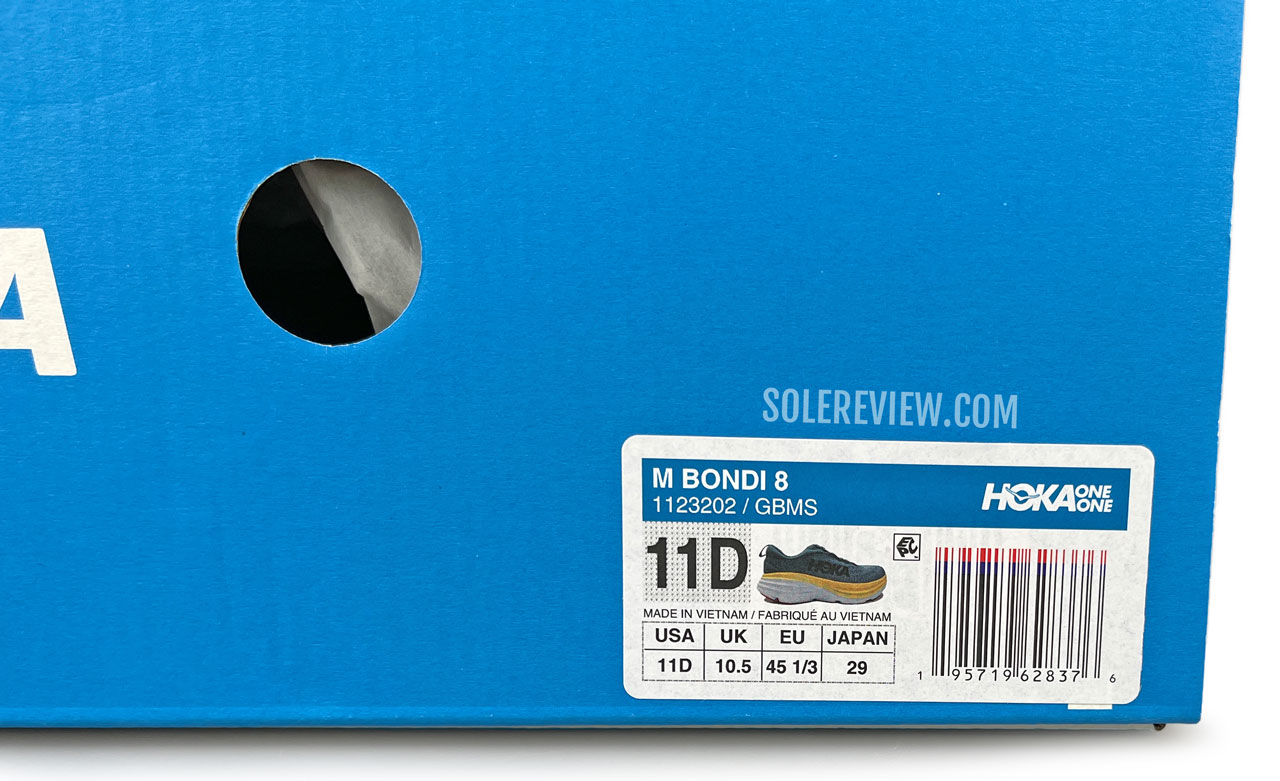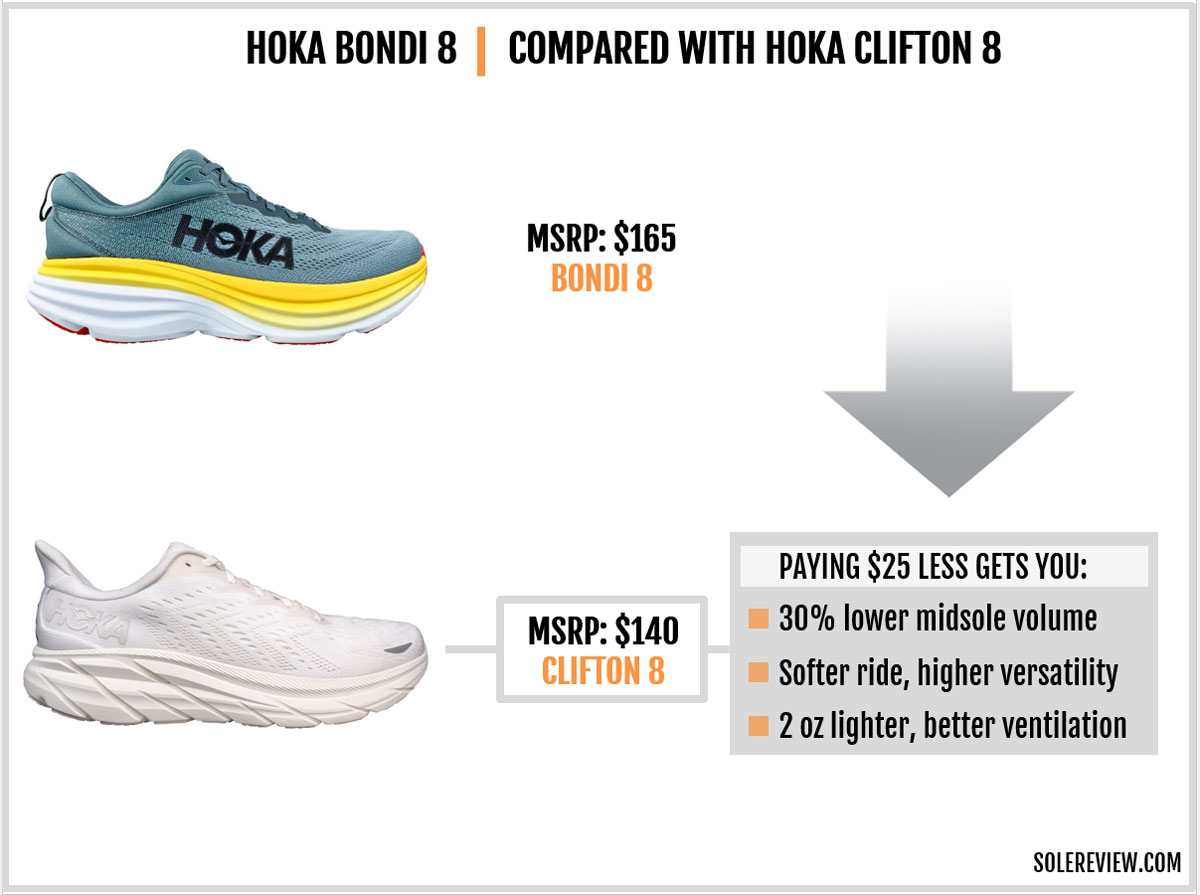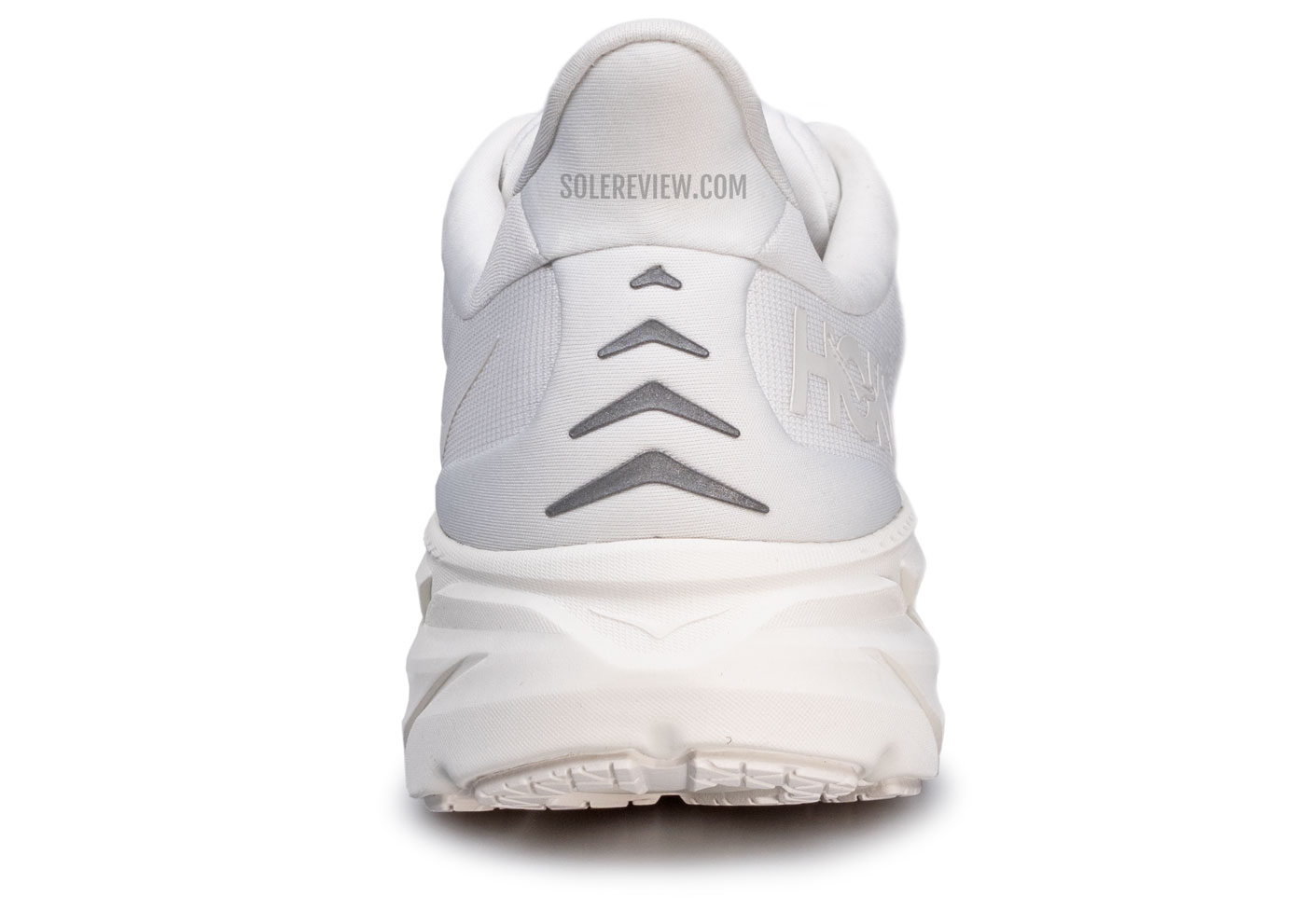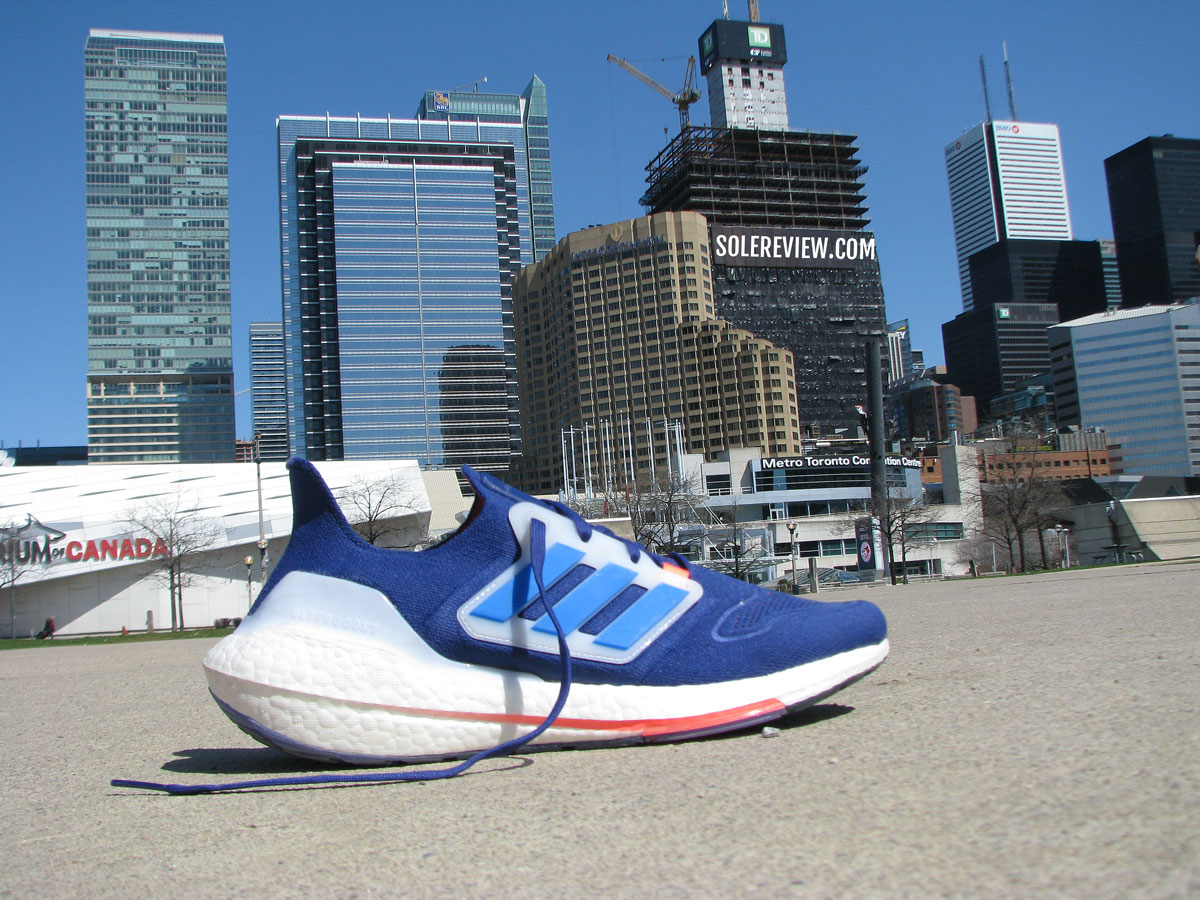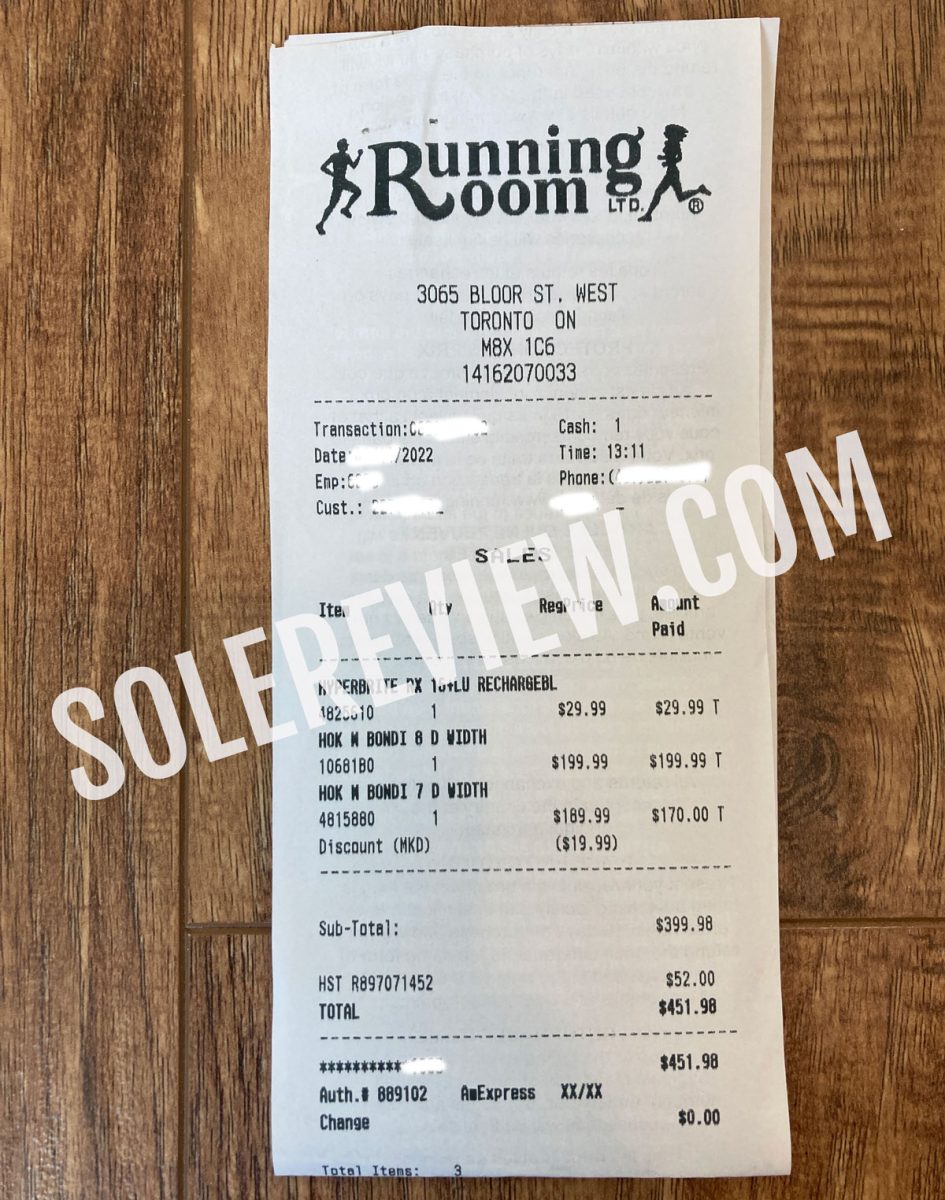
The Hoka Bondi 8 was purchased at full retail price for our review. The amount is in Canadian Dollars.
In this review:
SUMMARY AND VERDICT
If you’re on fence about buying the Hoka Bondi 8 or Bondi 7, allow us to help you decide.
You should buy the Hoka Bondi 7. As explained in our in-depth review, the Bondi 7 has an excellent ride quality that blends mileage-friendly comfort with high levels of stability. There isn’t much to complain about the upper, and optional widths are available.
So why not the Bondi 8? Well, that’s because the redesigned midsole has stiff edges under the arch.
This is a non-issue for walks or short-distance runs below 5K, but turns distracting during longer runs. While this gets better over time, it never goes away 100%.
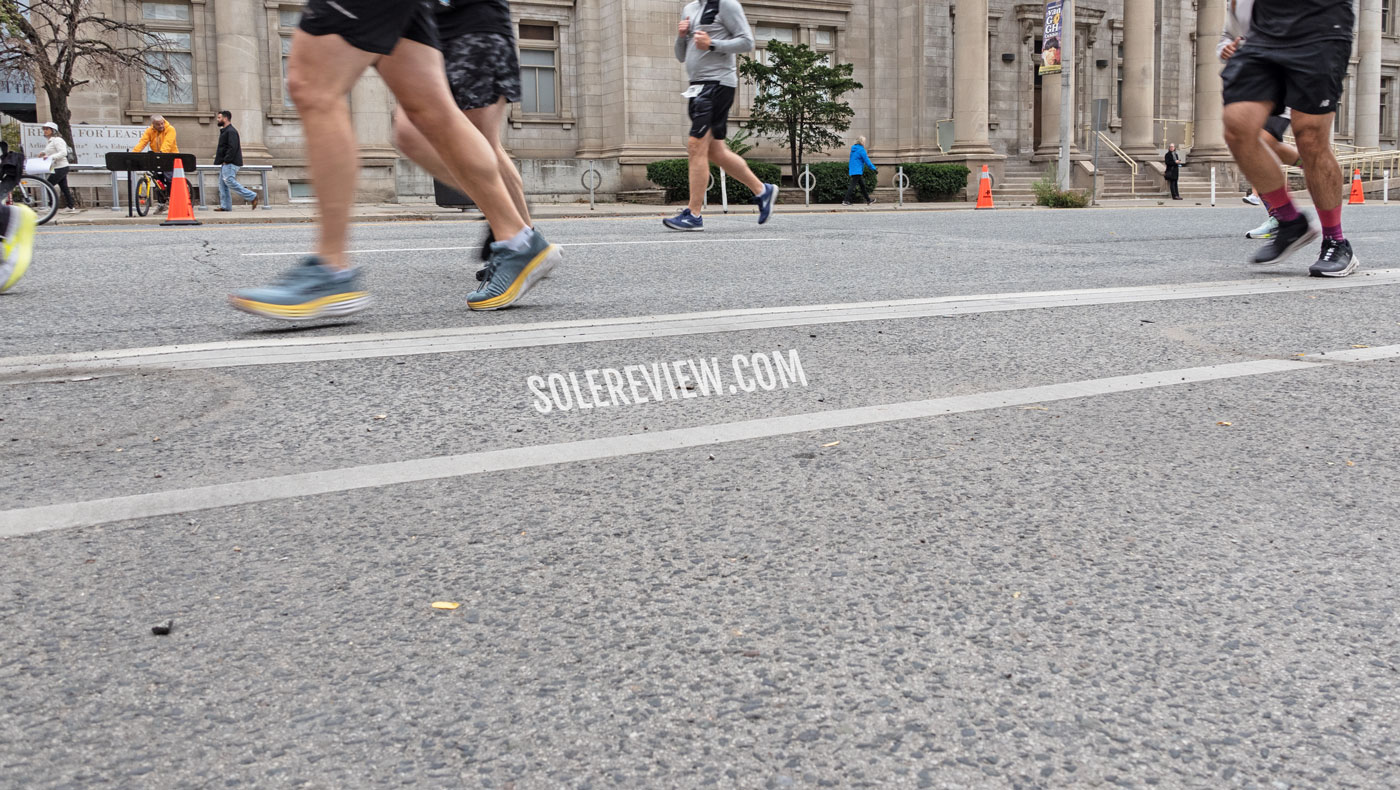
On paper, the Hoka Bondi 8 is the ideal long-distance cruiser. However, the new midsole and upper fit disagree.
So if you’re planning to run your next half-marathon in the Bondi 8, we recommend that you do it in the Bondi 7 instead. Or any other shoe that’s recommended at the end of this review.
Other than that, the Bondi 8 has everything that one expects of it.
The midsole is still made of compression-molded EVA, so the ride feels very familiar. The firm cushioning is very stable and neutral, and would have been a comfortable cruiser – if not for the flawed midsole.
The upper gets a new ‘burrito tongue’ and gets rid of the Bondi 7’s TPU overlays. While the secure upper fits true to size, the interiors are slightly narrower due to the new midsole.
THE HOKA BONDI 8 COMPARED WITH HOKA BONDI 7
From the outside, the redesigned Hoka 8 looks visually striking, but this is one of those ‘form over function’ updates.
Under the skin, the EVA midsole behaves similarly to the Bondi 7. Its firmness gives it a high level of stability, and the high-volume midsole has a satisfying cushioning depth.
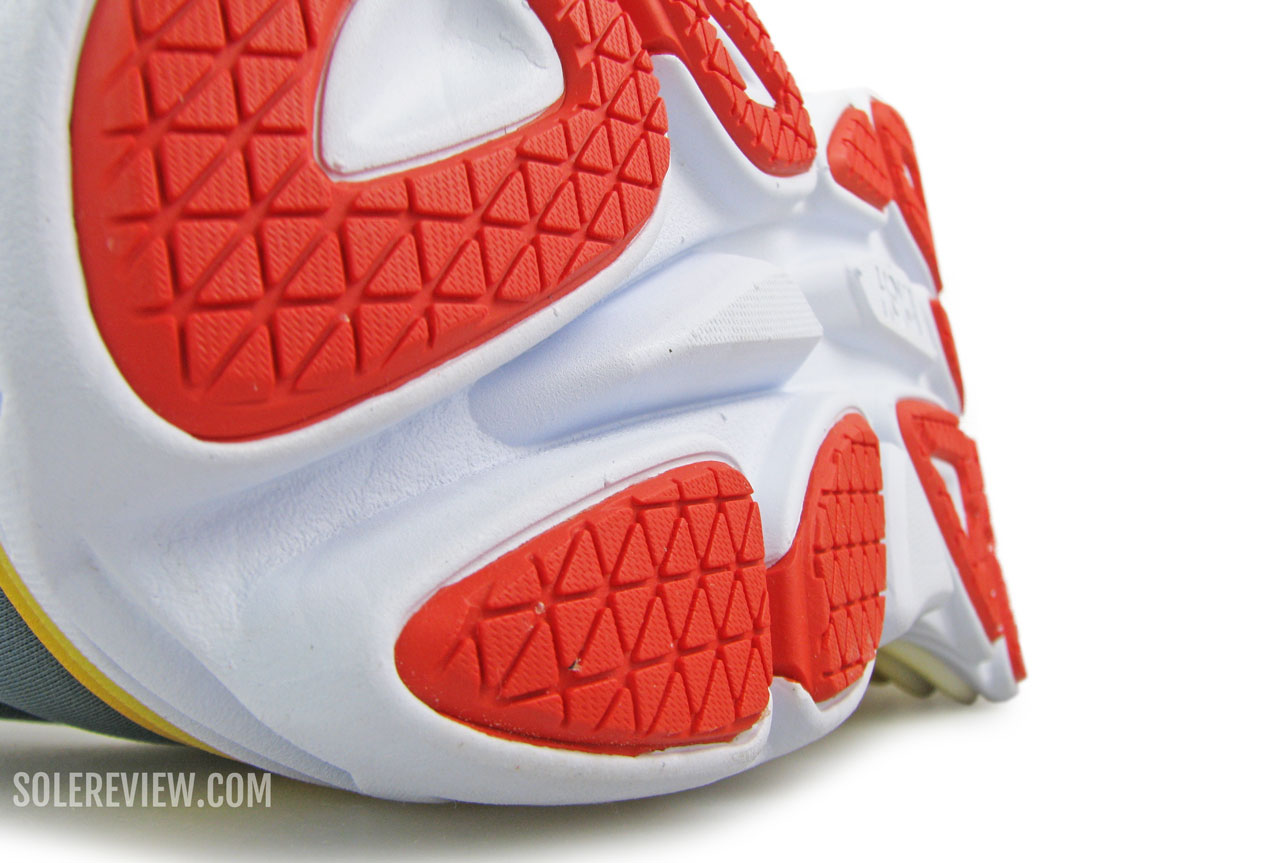
The Bondi 8 has a narrower transition channel with larger outsole lugs on the inner side. These changes make the heel firmer than the Bondi 7.
That said, the Bondi 8 is firmer under the heel because of the re-arranged outsole layout. The groove under the Bondi 7’s heel was wider than the 8. The Ortholite insole and perforated lasting are the same as the V7.
If it weren’t for the distracting midsole edges, the Bondi 8 would have been a capable high-mileage cruiser like the V7.
Since the base ingredients haven’t changed, the 11.6-ounce (329 grams) Bondi 8 weighs as much as the Bondi 7.
Given the similar dimensions and ride quality, the Bondi 8 is best used as a running shoe for slow to medium-paced runs – which is 5:00 min/km (8 min/mile) or slower.
The upper gets a new plush tongue with a half-sleeve, so that eliminates tongue slide. Though the upper is also available in optional wide and extra-wide sizes, the base version fits narrower due to the midsole.
The upper loses the TPU overlays of the Bondi 7, so the toe-box is more susceptible to absorbing water when running on damp pavements.
THE MIDSOLE DESIGN AND RIDE EXPERIENCE
Hoka uses adjectives like ‘incredibly soft’, ‘bouncy’, and ‘ultralight’ to describe the Bondi 8’s ride, but we respectfully disagree.
The fancy-looking midsole is nothing more than a stack of compression-molded EVA foam.
That’s the same foam used on all the past versions of the Bondi, so the ride quality isn’t noticeably different from say, the Bondi 7.
The Bondi 8’s lacks the soft, lightweight, and bouncy cushioning of high-performance foams like the New Balance Fuelcell, Nike ZoomX, or Saucony Pwrrun+.
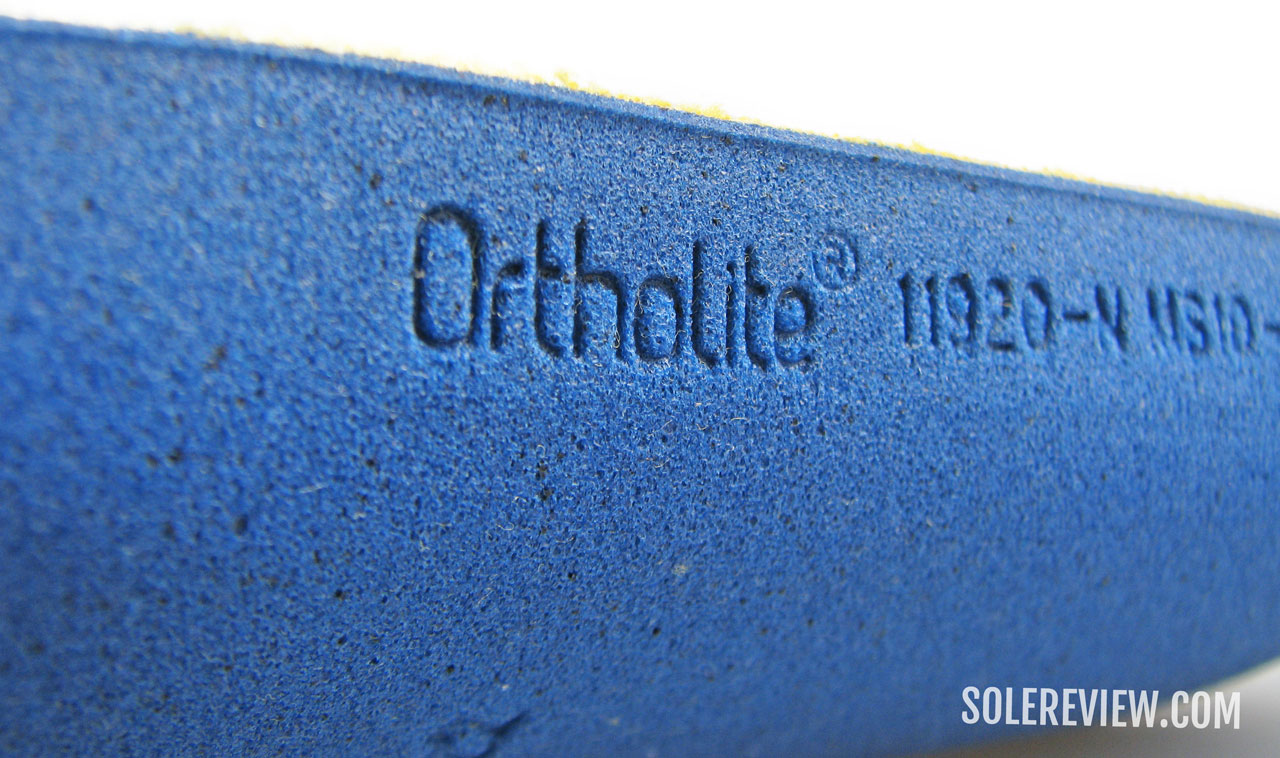
The Ortholite insole has a blown foam structure. It’s not very cushy, though – it offers a basic layer of step-in softness.
Even the removable Ortholite footbed and perforated lasting are the same as before. In short, there are no significant upgrades to the ride quality.
This also means that the Bondi 8 is still a heavy shoe. Hoka says that the shoe weighs 10.8 ounces, but doesn’t mention what size that’s for. Our US 11 weighs 12.3 ounces, so a US 9 will come in at 11.6 ounces.
However, Hoka has done a nice job with the weight distribution, so the Bondi 8 doesn’t feel like a 12-ounce shoe. It doesn’t feel bottom-heavy either.
The cushioning feels firm and flat with low levels of responsiveness – also known as bounce.
While the Bondi’s thick midsole makes the ride deeply cushioned, that’s a different thing from ‘soft’ or ‘bouncy’. A shoe can be cushioned without being soft and springy, and that’s what the Bondi 8 is about.
The only time the Bondi feels soft is at walking speeds; that’s because the slower loading allows for a longer compression cycle.
What the Bondi 8 does well is to create a padded yet supportive ride experience for long-distance runs. This isn’t a shoe for high-speed runs either. The Bondi feels most comfortable at speeds of 5:00 min/km (8:00 min/mile) and slower.
While the Bondi 8 can be pushed harder, it’s not the best shoe for such use cases. We see 4:30 min/km (7:00 min/mile) speeds at the upper limit of the Bondi 8’s capabilities.
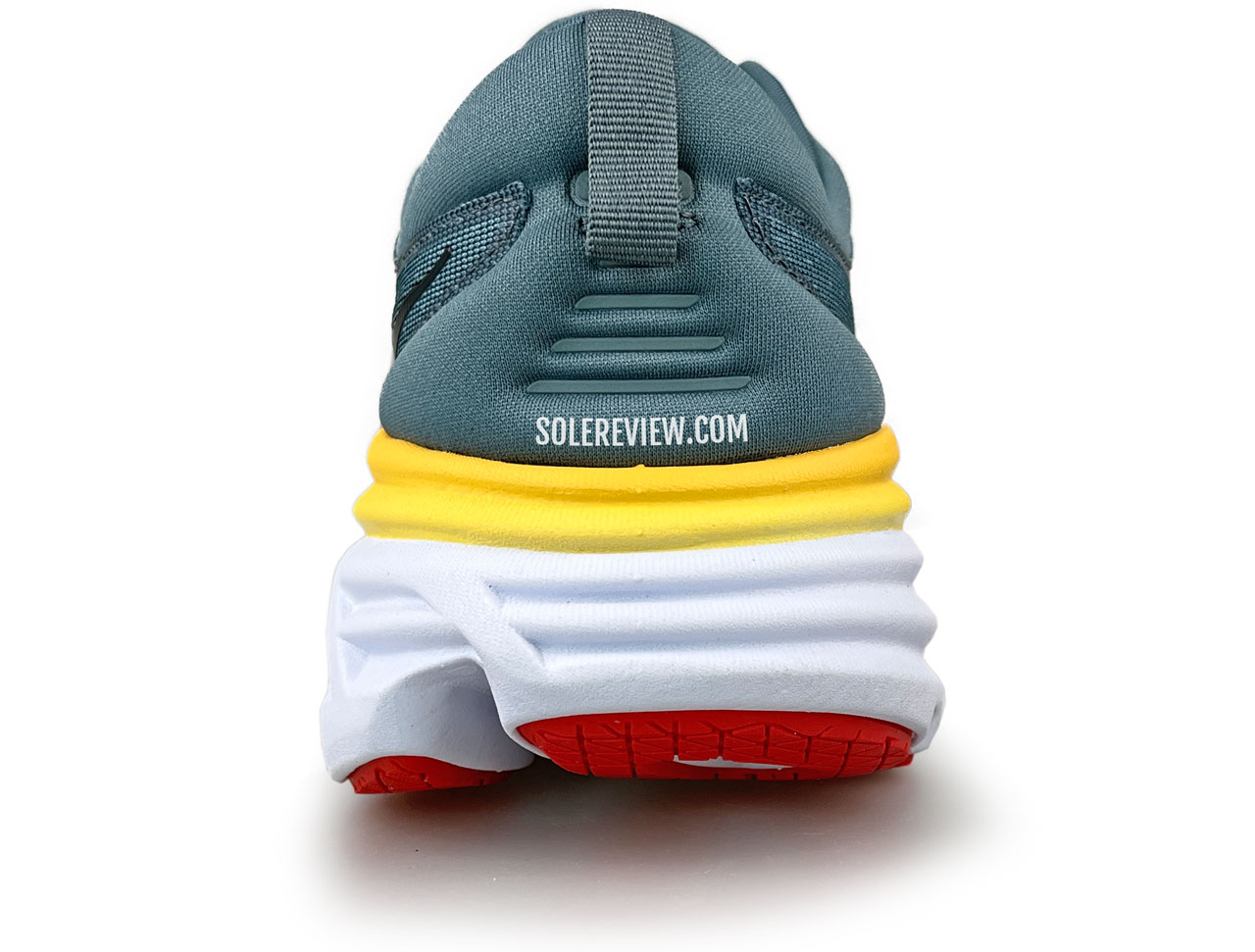
The firm midsole offers a high level of stability without any cushioning bias. In other words, the ride feels very neutral.
Three factors result in excellent ride stability.
The first is the firm foam that resists excessive compression. The wide base with balanced sidewalls also helps with stability. Finally, the outsole covers most points of contact and grips very well – even on damp roads.
Like most Hoka running shoes, the midsole has a rocker profile with an inflexible forefoot and high toe spring – which is the distance between the tip of the outsole and the road. As you can see in the picture above, the heel is also slightly beveled.
These features make the transition quality smooth, regardless of the fact whether you’re a forefoot or midfoot striker.
The 4 mm heel drop also helps with a smoother loading process. This is why the Bondi 8 doesn’t feel slow, and maintaining a consistent pace (and cadence) doesn’t feel like a chore.
The rocker midsole makes it easy to roll forward during the gait cycle, and the foot doesn’t struggle to load through the midsole. Most EVA foam midsoles without a plate benefit from a firm midsole, and the Bondi 8 demonstrates that in practice.
It’s time to address the elephant in the room – the stiff edges of the Bondi 8’s midsole. To be specific, this is the part of the midsole that’s under the arch.
This review took a long time to publish because we were waiting to see if a longer break in period helped. Unfortunately, while the stiff midsole edge feels better than it did during the first few runs, it’s still a distraction after 50 miles.
The rims of the new midsole has an inwards slant, and that’s what makes the Bondi 8 uncomfortable during long runs. This wouldn’t be a concern on a softer midsole, but the firm foam aggravates it.
If you plan to get the Bondi 8 for runs longer than 10K, then the Bondi 7 is a safer alternative. For shorter runs or walks, the Bondi 8’s midsole isn’t a deal-breaker.
RECOMMENDED ROTATION
Since the Hoka Bondi 8 is very similar to the previous model, the same rotational recommendation applies.
The Clifton 8 is a lighter shoe that feels quicker than the Bondi, thus making it a more versatile daily trainer. The Nike Pegasus 39 is an excellent choice as well.
On the lighter side of things, the Hoka Mach 5 makes short work of speed training and short-distance runs like a 5K and 10K.
Half-marathons are perfectly doable in the Mach 5, but we recommend a plated PEBAX foam racer like the Saucony Endorphin Pro 3 for a full marathon.
IS THE HOKA BONDI 8 DURABLE?
Historically, the Bondi has an established reputation for being a durable running shoe. The firm EVA midsole doesn’t lose its cushioning easily, and the rubber outsole covers most of the high-impact zones.
The outsole lugs also work independently of each other, so the wear and tear are evenly distributed. All things said, a lifespan of 400 miles sounds about right.
Even though the Bondi 8’s upper lacks the TPU overlays and denser mesh of the Bondi 7, its long-term durability doesn’t appear questionable.
THE UPPER DESIGN AND FIT
Hoka is back to its old tricks with the Bondi 8’s upper fit. The regular (D) width has a narrow forefoot – just like the good old days. We’re being sarcastic, of course – this isn’t what anyone wants.
The redesigned midsole has a narrow base, and that’s what makes the upper tighter than it needs be.
If the Bondi 7 was narrow, the Bondi 8 takes it one step further. The Bondi 8 also has a thicker mesh, so it’s not as accommodating or breathable as the 7.
While the entire forefoot is snug, the tightness is more noticeable over the small toe. Thankfully, Hoka sells optional widths (wide and extra-wide) for more room.
The rest of the upper fits quite nicely. The tongue and heel are plushly lined and quilted with foam. The lacing top-down pressure is non-existent, and there’s no tongue slide because of the new ‘half sleeve’.
Only one side of the tongue is attached to the upper, but that’s enough to keep it from sliding. It’s not the first time we’ve seen a half-sleeved Hoka; the 2015 Hoka Constant had a ‘burrito’ tongue.
The heel grip is excellent, and the internal counter keeps the foot locked in.
The heel and toe-box have some reflective detail for low-light visibility, and the back has a functional pull tab.
PROS AND CONS
If it were not for the stiff midsole edges (under the arch), the Hoka Bondi 8 gets many things right. The thick and wide midsole has all the cushioning comfort and ride stability that one needs for long-distance runs.
The narrow upper is plush on the inside and sells in multiple widths. Also, the half-sleeve is a nice addition to the Bondi.
Certain performance boundaries limit the Bondi 8’s capabilities. This is an 11.6-ounce shoe with a high-volume midsole, so it’s a struggle to go quicker than 5:00 min/km without it feeling like a chore.
The $165 price is also disconnected from its value proposition.
This Hoka shoe doesn’t use high-performance foams, nor does it have an internal cushioning system like a plate. The midsole is a molded slab of traditional EVA foam, and the upper is nice – but no better than a neutral trainer that costs $20-30 less. For example, the Clifton 8’s upper is a lot more comfortable.
Even the comparable New Balance Fresh Foam More V4 is $150 – a full $15 less expensive than the Bondi 8.
COMPARISON: THE HOKA BONDI 8 VERSUS HOKA CLIFTON 8
The Hoka Clifton 8’s midsole uses EVA foam with a similar density as the Bondi 8. The only difference is that the Clifton 8 uses a lot less foam than the Bondi, so the result is a lighter shoe that’s marginally softer.
According to Hoka’s published specs, the Clifton 8’s midsole has a volume of 655 cubic centimeters. The Bondi 8’s midsole has a comparatively higher volume of 842 cubic centimeters. Also, the Clifton is more than 2 ounces lighter.
The lighter bulk gives the Clifton better versatility during training runs. By which, we mean that you can push it harder at speeds faster than 5:30 min/km or 8:00 min/mile.
The Bondi is usually more comfortable than the Clifton for long-distance runs, but that’s a moot point considering the stiff edges of the redesigned midsole.
The Clifton 8’s upper is also more minimally-built, but with a more accommodating fit quality.
SHOES SIMILAR TO THE HOKA BONDI 8
On a conceptual level, the New Balance Fresh Foam More V4 compares to the Bondi 8. However, the More V4 has a softer ride than the Bondi 8, so it’s a matter of preference.
We view the Brooks Glycerin 20 as a practical alternative to the Bondi 8. The Glycerin 20 has a plush upper over a midsole with plenty of ride comfort and stability. It’s worth pointing out that the lighter Glycerin has a 10 mm heel-to-toe drop, versus Hoka’s 4 mm offset.
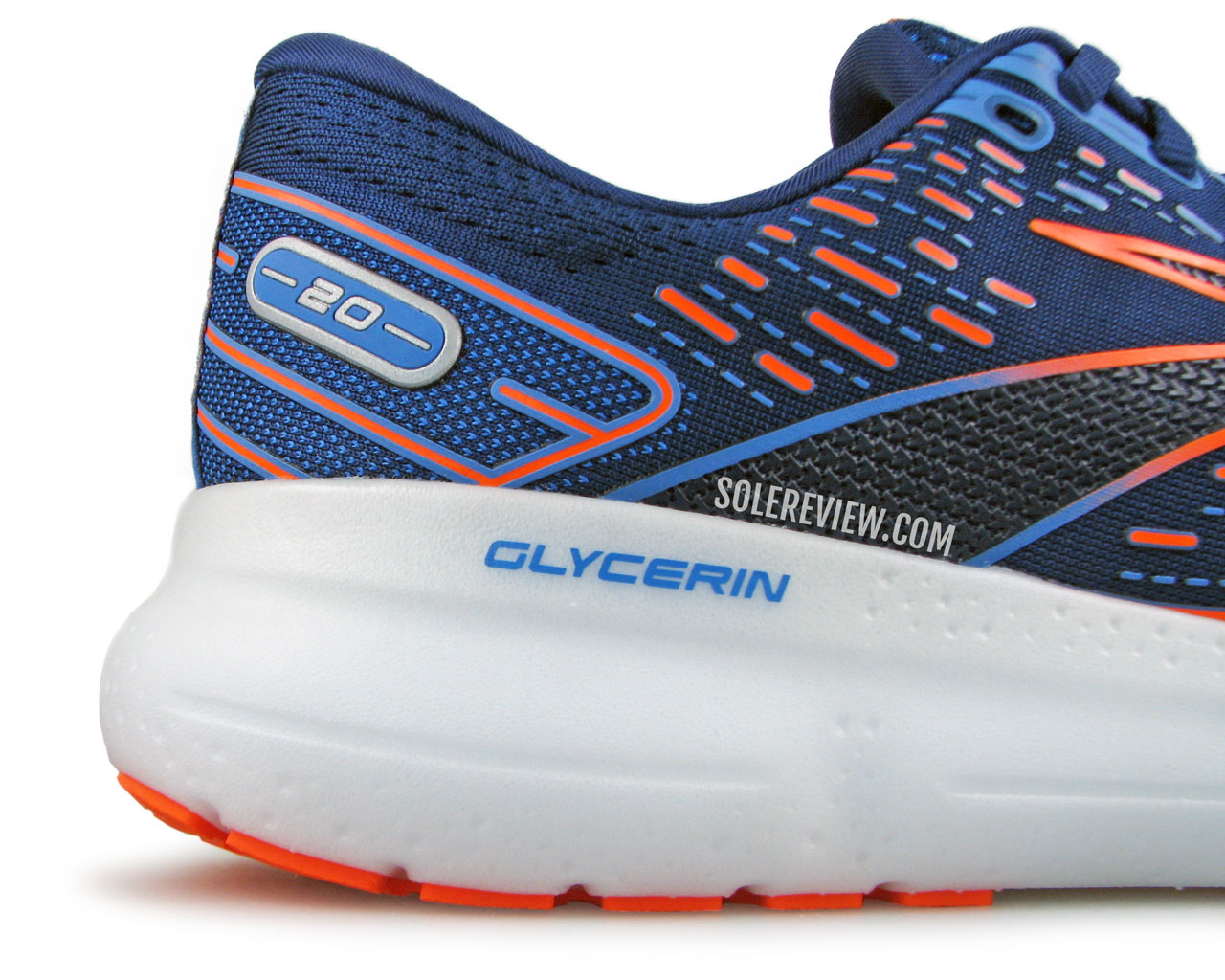
Though slightly heavy, the Brooks Glycerin 20 makes a strong case for itself as a long-distance cruiser.
On the other hand, the Saucony Triumph 20 is worth considering if you’re looking for a higher level of performance.
The Triumph’s expanded PU (Pwrrun+) midsole has mileage-friendly cushioning, but with a pep that makes it quicker and more versatile.
The adidas Ultraboost 22 uses a similar midsole foam as the Triumph 20, but it leans towards athleisure. The Mizuno Wave Sky 6’s on-road performance falls somewhere between the Triumph and Ultraboost.
Finally, the Nike ZoomX Invincible Run 2 has the last word in cushioning softness.
Do you own this shoe? Improve this review by sharing your insights – submit a review here.

